- L’arredo e il design -
020 014 060
ARTISTIC CERAMICS WITH A FEMININE TOUCH
GIA ITALIA: SELECTED RETAIL STORES
HOSPITALITY: THE EVOLUTION OF HÔTELLERIE

020 014 060
ARTISTIC CERAMICS WITH A FEMININE TOUCH
GIA ITALIA: SELECTED RETAIL STORES
HOSPITALITY: THE EVOLUTION OF HÔTELLERIE
refined textures and harmonious palettes for the new quilt collection


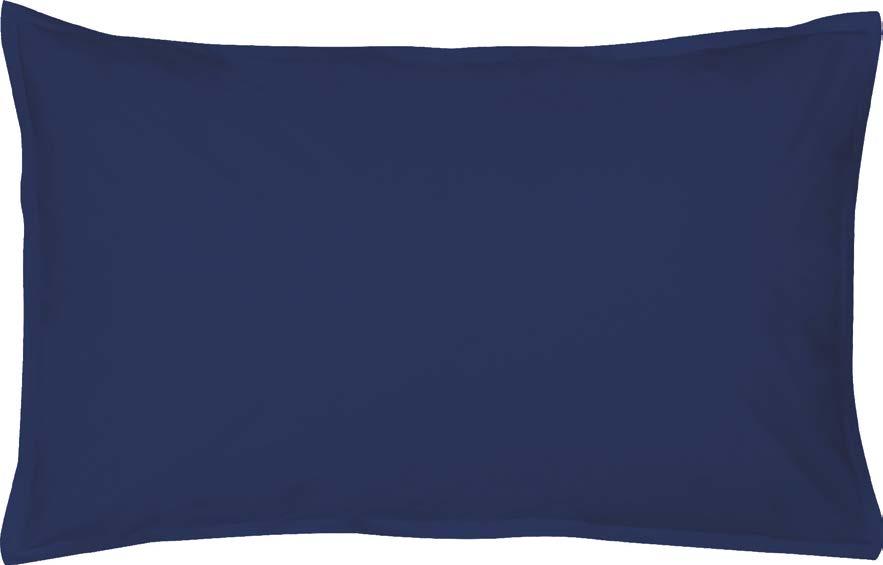





Refined textures and harmonious palettes for the cold season: Cinelli Piume e Piumini unveils its new Fall/Winter 2025/26 Quilts Collection
Trends, market news and updates from the home style and tableware industry
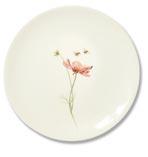
14 MARGHERITA MEDICI
Casastile meets one of the owners of Laboratorio Paravicini, Milanese artisan ceramics
38 MADE IN ITALY
Guardini: three generations of bakeware expertise and growing specialization
48 JULIE PRADIER
Interview with Julie Pradier, Marketing and Communication Director of Maison&Objet
50 ITALY AT MAISON&OBJECT
Casastile meets Italian companies at Maison&Objet
42 GUIDES
Duvets, Quilts and Toppers. Materials, History and Tips for Perfect Sleep

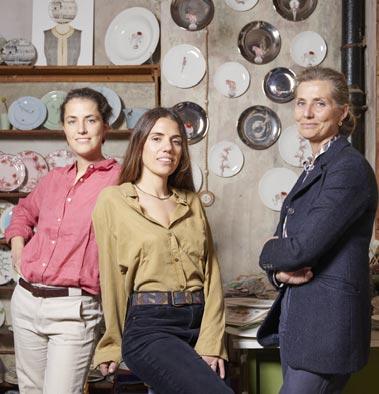
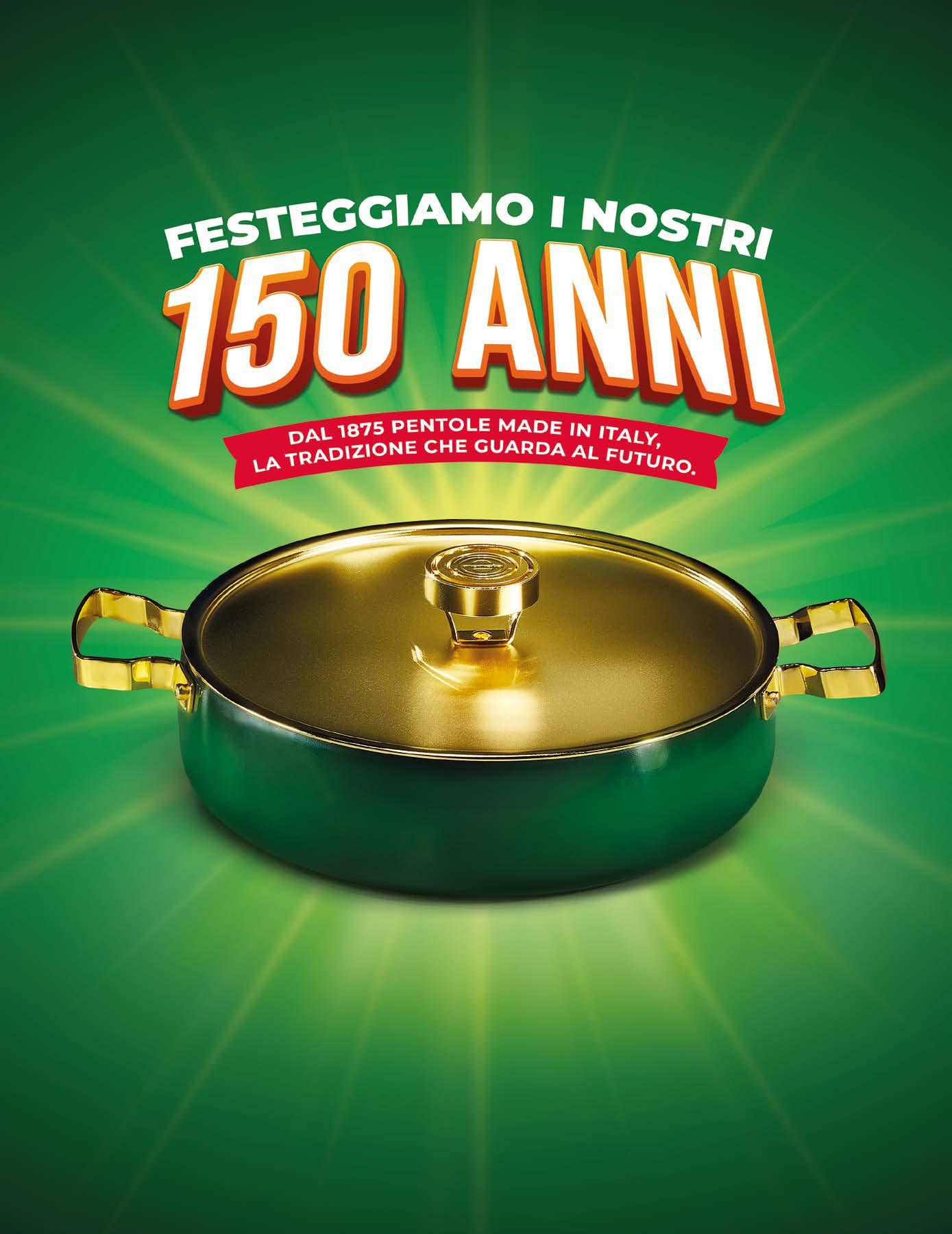
54 COVER STORY
2025 marks a major milestone for the Arcturus Group:
Paderno celebrates its 100th anniversary with a significant presence at Host 2025.
56 HOST 2025
Milan hosts the 44th edition of the world’s leading trade fair for hospitality and out-of-home, scheduled for 17–21 October
58 SMART LABEL 2025
The innovation award for the hospitality sector promoted by HOST returns
60 HÔTELLERIE
Technology and sustainability are shaping the evolution of the hospitality industry
70 FOOD SERVICE
Taking care of the table in every detail is key to offering guests a truly unique experience

76 TABLEWARE
Horeca mise en place: a tribute to refined, effortless elegance
82 TREND
B&Bs in Italy: female leadership and the sector’s economic outlook
86 TEXTILE
Elegant linens dressing hotels and B&Bs in style
92 LUCA CARRARESI
Luca Carraresi, owner of the Dal Toscano store, explains the current dynamics between retail and hospitality
96 TREND
Italian wine shines in the HoReCa channel
98 MIXOLOGY
The irresistible art of mixology
Casastile announces the winner who will represent Italy in Chicago


Dal sodalizio artistico tra Weissestal e Andrea Castrignano,
I colori iconici e sartoriali della palette dell’interior designer s’incontrano e si sovrappongono su una tavola audace, travolgente e di grande carattere.

weissestal.it


Organo ufficiale ART arti della tavola e del regalo
- L’arredo e il design -
Bimestrale - 438 Novembre 2025 - www.casastileweb.it
EDITORE
EDIBRICO srl con socio unico
Viale Emilio Caldara, 44 - 20122 Milano
DIRETTORE EDITORIALE E RESPONSABILE
Nicla de Carolis - decarolis@edibrico.it
CONSULENTE EDITORIALE
Giulia Arrigoni - giulia.arrigoni@edibrico.it
COORDINATORE DI REDAZIONE
Laila de Carolis - laila@edibrico.it
GRAFICA E IMPAGINAZIONE
Gabriele Curato - gabriele.curato@edibrico.it
SEGRETERIA DI REDAZIONE
Patrizia Ferrari - p.ferrari@edibrico.it
Claudia Cazzulo - claudia@edibrico.it
IN REDAZIONE
Mauro Balbi, Francesco Poggi redazione.casastile@edibrico.it
COLLABORATORI
Fabio Destefani, Francesca Guerini Rocco, Patrizia Pagani
IMMAGINI Shutterstock
DIRETTORE COMMERCIALE
Cesare Gnocchi - cesare.gnocchi@tecnichenuove.com
SVILUPPO COMMERCIALE
Monica Sposito - monica.sposito@tecnichenuove.com
UFFICIO COMMERCIALE VENDITA SPAZI PUBBLICITARI: Milano, Via Eritrea 21 - tel. 02 92984481 - commerciale@tecnichenuove.com
Anna Boccaletti (coordinatore) anna.boccaletti@tecnichenuove.com
UFFICIO TRAFFICO E PUBBLICITÀ
Lorena Villa - lorena.villa@tecnichenuove.com - tel. 02 92984542
ABBONAMENTI
Tariffe per l’Italia: cartaceo annuale 22,00 euro; cartaceo biennale 34,00 euro.
Modalità di pagamento: sul sito www.edibrico.it; Conto corrente postale n.13844469
intestato a: EDIBRICO - loc. Vallemme, 21 15066 Gavi (AL) Bonifico bancario su Iban: IT43Q0623048310000046330946 L’abbonamento avrà inizio dal primo numero raggiungibile. Servizio clienti: 0143 645037 - abbonamenti@edibrico.it
STAMPA
Faenza Printing Spa - Via Vittime Civili di Guerra, 35 - 48018 Faenza (RA)
Copyright EDIBRICO SRL
La riproduzione delle illustrazioni e degli articoli pubblicati dalla rivista, nonché la loro traduzione è riservata e non può avvenire senza espressa autorizzazione della Casa Editrice. I manoscritti e le illustrazioni inviati alla redazione non saranno restituiti, anche se non pubblicati e la Casa Editrice non si assume responsabilità per il caso che si tratti di esemplari unici. La Casa Editrice non si assume responsabilità per i casi di eventuali errori contenuti negli articoli pubblicati o di errori in cui fosse incorsa nella loro riproduzione sulla rivista.
REGISTRAZIONE
Tribunale di Milano n.392/72
ROC n. 34848 del 26 agosto 2020
ISSN 0390-1512




























These days in Milan, Host is taking place — the world’s leading trade fair for the Ho.Re.Ca. sector (an acronym for hotellerierestaurant-café), which covers services and products related to hospitality, foodservice, and out-of-home consumption of food and beverages. It’s an unmissable opportunity to stay up to date with a rapidly evolving industry — one that is showing steady growth and still holds untapped potential, thanks not only to the many wonders of our country but also to upcoming events like the Milan-Cortina 2026 Winter Olympics. The key figure that concerns the retailers this magazine is aimed at is the growing number of Bed & Breakfasts, guesthouses, holiday homes, and farm stays — a phenomenon clearly visible in any town or city, with an ever-increasing number of plaques popping up on doors and buildings. Hospitality numbers in Italy are worth noting: according to ISTAT, there are 32,194 hotel establishments and 197,337 non-hotel accommodations across the country. But the real figures may be even higher when including “short-term rentals run on a non-business basis,” which are estimated to exceed 315,000. These accommodations have mostly emerged in response to tourists seeking more affordable options and wishing to immerse themselves in local traditions and everyday life. This means that many people now manage such ventures — often by converting part of their own home or purchasing small apartments — and they represent a great customer base for specialist homeware retailers. For them, turning to a wholesaler wouldn't make much sense. They typically need to furnish 3 to 6 rooms, and a well-stocked homeware store can offer everything they require: from bed and bath linens to breakfast essentials, decorative items, and home fragrances. To tap into this new clientele, you’ll find inspiration in the many new ideas featured from page 53 onwards in this issue — and, of course, by visiting Host itself. It could also be worthwhile to dedicate a section of your store specifically to Ho.Re.Ca., showcasing a carefully curated service tailored to this vibrant and promising sector.

Nicla de Carolis
Cinelli Piume e Piumini unveils its new AW 25/26 Quilt Collection: refined textures and harmonious palettes for the colder season
Cinelli Piume e Piumini presents its Autumn/Winter 2025/2026 quilt collection, the perfect blend of sophisticated aesthetics and top-quality materials. The new proposals stand out for their enveloping textures, refined graphic patterns and harmonious colour palettes that reinterpret interior design trends through textiles.
From geometric design to floral inspirations
The collection ranges from contemporary artinspired geometries to delicate floral motifs. Each pattern is designed to complement the home environment, helping to create a personal and curated atmosphere in the bedroom. These refined graphics and soft textures elevate the quilt from a simple functional item to a true piece of decor.
The quilts are available in Standard, Medium and Light versions to meet different warmth needs throughout the colder months. Filled with premium white goose down, they ensure optimal comfort, high breathability and long-lasting well-being during the night—hallmarks of the Tuscan brand’s quality.
The collection comes in three sizes—double, queen, and single—to provide maximum versa-




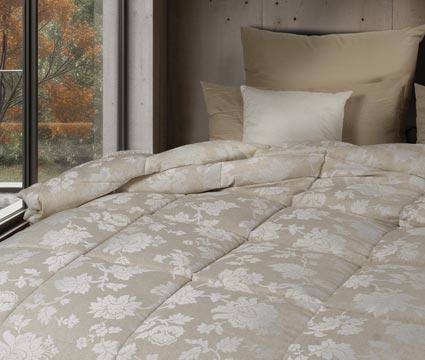

tility and suit every bedroom layout. This comprehensive range makes it possible to dress any home with style, from compact urban studios to spacious master bedrooms.
Every quilt is crafted in Tuscany by the skilled hands of Cinelli Piume e Piumini artisans, who have preserved their authentic know-how for over 60 years, blending innovation and tradition. Each product embodies the brand’s legacy, passion, and culture of quality sleep—translated into long-lasting, recognizable excellence.
This new collection is the evolution of a heritage handed down through three generations, staying true to a commitment to Italian artisanal manufacturing and meticulous attention to detail. With this collection, Cinelli Piume e Piumini reaffirms its ability to interpret contemporary trends without compromising the values of quality and comfort that define the brand. The AW 25/26 quilts are the perfect synthesis of design research and functionality, ready to turn every night into an experience of genuine wellbeing.
www.cinellipiumini.com

by Fabio Destefani

With over 30 years of experience collaborating with various luxury maisons in the fields of innovation, textile research and experimentation with materials and techniques, Michela Finaurini offers readers a captivating journey through the multifaceted world of fabrics—narrated with both passion and expertise. From the secrets of brocades and silks, jacquards and cashmere, to the interplay of colours and textures, the warp and weft, and the ways in which fabrics “speak” to us—this book reads like a grammar manual for understanding textiles in all their complexity. It reveals the myths and stories woven into their threads and teaches us to recognise the language they use to communicate through touch, colour, and form. Each material speaks to those who wear it, handle it, or use it—offering sensations that go beyond the visual. As the author affirms, fabric is “a soul on the skin.” A compelling and richly informative read for professionals, enthusiasts, and anyone curious about the deeper meaning and emotion embedded in textile art.
Furnishing our home correctly means turning it into a welcoming and harmonious space. But how do we achieve this? A seemingly simple question, yet the answer is far from obvious. In the world of interior design, there are no absolute rights or wrongs—only a wealth of established experience based on the fundamental principles of architecture. Frida Ramstedt, author of this insightful book, shares these core concepts in an accessible and practical way. Rather than focusing on fleeting trends or expensive purchases, she explains essential design rules that help anyone create the desired atmosphere at home, tailored to personal taste and needs. A valuable resource for both beginners and enthusiasts, this book empowers readers to uncover the interior designer within and discover what truly contributes to a better, more comfortable living space.

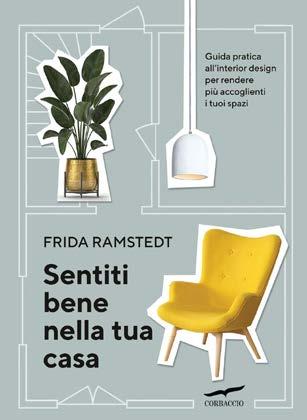
Born in Milan in 1931, Alessandro Mendini was a singular figure in the international design landscape. His multifaceted career, which began in the early 1960s and continued until his passing in 2019, encompassed architecture, design, criticism, art, poetry, and writing. Internationally renowned for the provocative style of his industrial products and for his visionary architecture, Mendini is widely considered one of the key figures in the redefinition of Italian design—creator of a bold and inspiring world of objects. Throughout his life, he took on many roles, from editor-in-chief of leading architectural magazines such as Casabella and Domus, to shaping the brand identities of companies like Alessi and Swatch. This comprehensive monograph by Stefano Casciani offers a deep and intimate look at Mendini’s work, enriched with photographs, drawings, and sketches from the artist’s private archives. A tribute to one of the great masters of contemporary creativity.
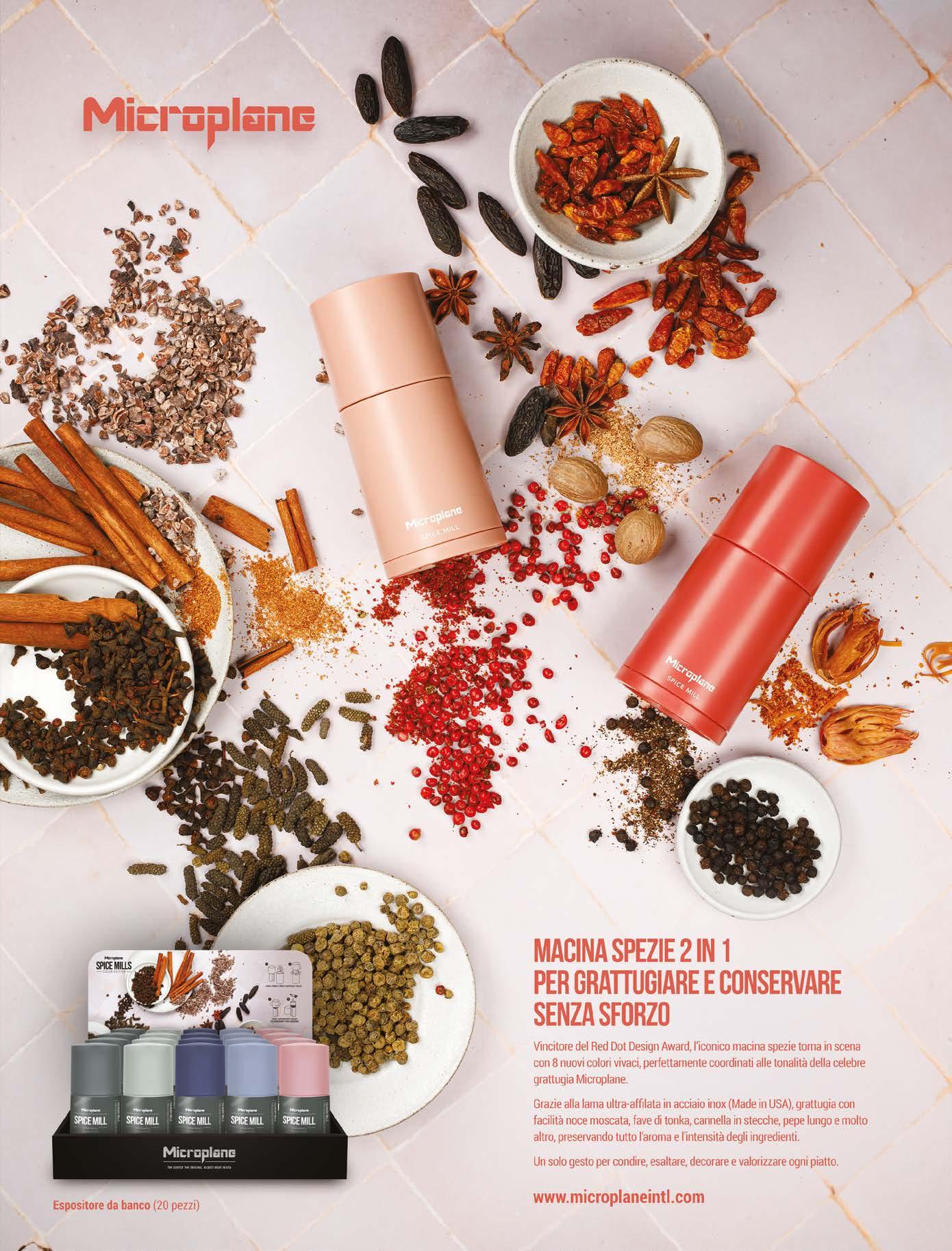
For over thirty years, right in the heart of Milan, Laboratorio Paravicini has been creating ceramic plates and tableware sets embellished with elegant and original decorations. To learn more about the creative philosophy behind this all-female artisan company, which boasts collaborations with prestigious fashion brands, we spoke with Margherita Medici, one of the owners
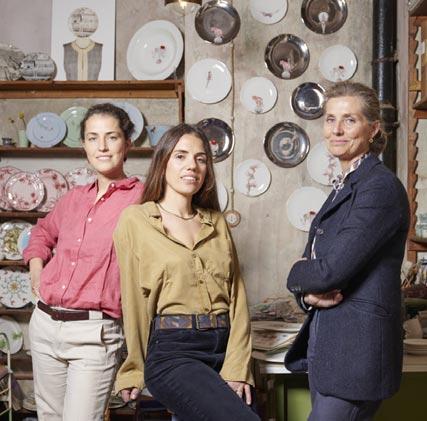
by Fabio Destefani
An artisan workshop in the center of Milan, Italy’s most industrialized city—an unusual and bold choice. Could you walk us through the main milestones of your story?
It all began more than thirty years ago thanks to my mother, Costanza Paravicini, and her sister, who were both highly skilled decorators. What started out as a hobby and a bit of a game eventually turned into a real business. At the heart of it all was my mother’s love for ceramics—a material that, compared to porcelain, offers a much warmer and more welcoming luminosity and allows for a more distinctive decorative technique. In fact, ceramics are decorated under the glaze, that is, before the glazing process. The first two years were spent experimenting with the expressive potential of the material and ma-

stering a decorative technique that is anything but simple.
What challenges does it involve?
Decorating ceramics is nothing like drawing on a smooth sheet of paper. The colors are pigments—powders that, when diluted with water, become a sort of watercolor. So, on a porous and rough surface like raw ceramic, it’s quite difficult to move the brush smoothly to create the decoration.
Once the technique was mastered, how did the activity progress?
Being true perfectionists, my mother and aunt spent the first two years discarding numerous plates because they wouldn’t accept the slightest mistake. Once they mastered the technique, they began accepting commissions from friends and family. The real turning point came in 1995, when they took part in their first trade show, “Artigianato e Palazzo,” held at Palazzo Corsini in Florence.

Your mother’s passion for craftsmanship must have been contagious, considering that you and your sisters, Benedetta and Bona, now all work at the workshop… What draws you to this job?
After my aunt passed away in 1997, my mother was joined for about ten years by a close friend, who helped solidify the workshop into a more structured artisan business known even abroad. Then, in 2011, when this friend took a different path, my sister Benedetta, who has a background in graphic design, joined. I followed in 2017, and Bona joined four years ago.
Does your mother still work at the workshop, or have you taken the reins?
Mom still works with us—she is the one who initiates the creative process, the one who brings the design to the plate. Once she has done this crucial part, the production continues either via printing or hand-painting, handled by the skilled decorators we’ve trained over the years.
How many decorators do you currently employ?
Three are dedicated to the printing technique, and two focus on hand-painting—so five in total.
Plates with various decorations inside the workshop. Ph. Mario Zarei

How has the workshop evolved over the years?
Orders have increased significantly, coming from all over the world—especially the United States. This growth is also due to our Instagram page, which has become a great showcase for our work. Gradually, we gained more and more followers, and our reputation grew. As a result, producing everything by hand became increasingly difficult due to the time it takes to fulfill orders. That’s when we decided to develop the printing technique as well.
What does this technique involve?
A digital file is created from which a decal is developed and applied to the plates. This method allows for much faster decoration compared to hand-painting. These are extremely high-quality prints that faithfully replicate the freshness of brushstrokes. All printed plates are dishwasher safe—provided they don’t feature gold or platinum details. The decoration is also protected by a glazing layer, making the plates suitable for
everyday use, not just special occasions. Of course, we still do hand decoration because not everything can be replicated through printing. Some colors simply lack the natural brilliance. There’s also a third method—the mixed technique—where printed plates feature hand-painted elements. This is generally used when certain colors lack the vibrancy they should have.
Your distinctive decorations define Laboratorio Paravicini’s identity. They evoke a dreamlike world rooted in tradition while embracing contemporary aesthetics… Could you tell us more?
As you rightly point out, our decorations are inspired by historical styles because Italy has a rich and glorious ceramic tradition. But we also draw from non-European motifs—Oriental ones, for example—which we reinterpret with a modern touch to avoid what I call the “granny’s plate” effect. Anything can be a fruitful source of inspiration. The effect of our plates on a table also depends greatly on the mise en place. Even traditionally styled plates, when paired with more contemporary tablecloths or glassware, can take on a completely
different feel. Because our inspirations are so varied, there isn’t a single pattern that defines Laboratorio Paravicini. Customers themselves can be a wonderful source of inspiration: they bring us ideas that we then reinterpret, sometimes giving rise to a new collection. That said, we never work for third parties. If someone brings us a fully designed decoration and asks us to reproduce it, we decline. We welcome outside input, but our creative contribution remains essential.
What do younger generations find appealing about handmade products?
It would be a shame to let go of the business our mother started, so we’re happy to continue the tradition while also innovating. Digital printing helps us with that, as do our incredibly skilled decorators. Personally, I fell in love with this job because it's so diverse. You get to create new things every day and interact with prestigious clients and brands. This year, for example, we created a line for Louis Vuitton— a collaboration we’re very proud of, as it shows the workshop has entered the realm of ultra-luxury.

If I’m not mistaken, you also collaborated with Dior in the past…
Yes, in 2016–2017. We even created a collection for them. Other fashion brands have followed, though they prefer to remain unnamed.
When working with brands that have a strong identity, how far can you take your creativity? How do these collaborations work?
They usually give us a theme, which we then develop using our own aesthetic sensibility. Most of the time, our initial design is already appreciated, though some adjustments may be
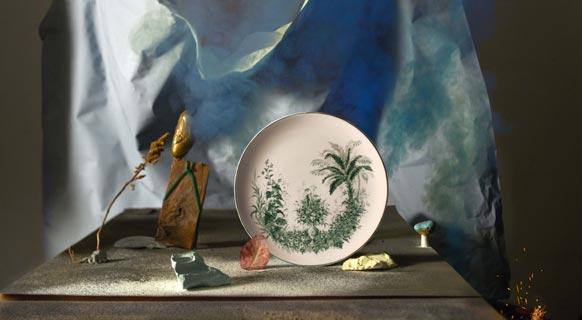

made along the way. These are co-branded collections, and the partnership typically involves exclusivity—meaning we don’t sell Louis Vuitton plates in our own workshop. However, it is clearly communicated that the designs and the product come from Laboratorio Paravicini. In the past, we’ve done white-label collaborations—meaning the collections weren’t branded—but we’re no longer interested in that.



Even though such projects are stimulating, they’re not always simple. In an artisan workshop like ours, not everything is flawless. Sometimes there are imperfections—that’s just part of handmade work. In fact, these flaws attest to the uniqueness of the piece. But this philosophy isn’t shared by many luxury brands, for whom any imperfection is just a defect to be corrected.
Do you see a renewed interest in craftsmanship?
Absolutely, yes—though I believe the sector should receive more government support. Keeping small artisan businesses alive isn’t easy. Many ceramic traditions and workshops have
vanished. Lombardy, especially Lodi and Laveno, used to produce outstanding ceramics, but that’s no longer the case. Fortunately, some activity continues in Veneto… And of course, the influx of mass-produced Chinese ceramics hasn’t helped.
What kind of products do you make?
Mainly plates—for both tabletop use and wall décor. We also produce a breakfast line that includes coffee cups. It’s a delicate collection, as our ceramic is very thin—not the typical thick ceramic found elsewhere in Italy. We deliberately made it thinner to enhance elegance. Our designs would lose their distinctive refinement on thicker ceramics. The cups, being quite fragile,
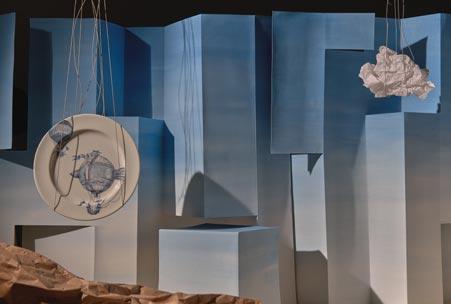

are made in limited quantities, and we always inform customers of their delicacy.
What is Laboratorio Paravicini’s idea of the perfect table?
We love to surprise those who gather around the table to share moments of conviviality. Our goal is to help create a welcoming atmosphere for diners. Thanks to our varied collections, the mood can be extremely elegant or more playful and informal. However, as mentioned, plates are just

one element of the mise en place. Combined with the right cutlery, glassware, and table linens, they can help create unique atmospheres.
You offer a personalized service—how important is tailor-made today?
It’s meaningful for customers to know that the product they’re buying is truly theirs—not just in terms of ownership, but because it reflects their personality. We create the design, sometimes incorporating the customer’s input. For
example, simply adding the client’s initials to a plate makes it instantly special and personal. Those who come to our workshop are looking for something a bit exclusive, and we’re ready to provide it.
To conclude, could you choose three adjectives to describe Laboratorio Paravicini’s identity?
Refinement, artisanal care—meaning meticulous attention to detail—and creativity.
Founded over thirty years ago by Costanza Paravicini, Laboratorio Paravicini is located at Via Nerino 8, in a hidden courtyard in the historic center of Milan. This space—an authentic Wunderkammer for lovers of hand painting and ceramics—is where countless tableware collections come to life, enriched with handpainted decorations and printed patterns in a wide variety of styles. The plates feature dreamlike and exotic worlds inhabited by snakes, jugglers, hot-air balloons, calligraphy, and monograms. Contemporary designs coexist with classical inspirations in a play of references and allusions that evoke poetic imagery. Over time, the company’s production has steadily grown, yet it has managed to preserve its distinctive artisan identity.
The Global Innovation Awards celebrates excellence in the home and kitchen retail industry. Casastile coordinates the national selection of the best Italian stores, which then move on to compete at the international level in Chicago—an opportunity for global visibility and engagement with the world’s leading retail professionals

The gia (Global Innovation Awards), promoted by the International Housewares Association (IHA), has since 2000 represented the most prestigious international recognition dedicated to innovation and excellence in retail specializing in tableware, kitchenware, and home products. This esteemed competition honors stores that stand out for their innovative strategies, creative visual merchandising, and ability to deliver memorable
shopping experiences. National winners are selected to represent their country at the global finals, held in Chicago during The Inspired Home Show, from March 10 to 12, 2026. On this occasion, participants will gain international recognition, have the opportunity to engage with industry leaders, and take part in a dedicated gala evening. For Italy, Casastile’s editorial team identified the top home and gift stores, and a jury of experts—including journalists, archi-

tects, and designers—selected the Italian representative for the international stage: Giocovivo took first place, distinguishing itself through its ability to transform the retail space into a luxury experience and its exceptional attention to detail. This victory grants Giocovivo access to the prestigious Chicago event, where it will compete for the title of GIA Global Honoree.
Also on the podium were Casimiro, in second place, and La Casalinga, in third, confirming the excellence and diversity of innovative approaches in Italian home and gift retail.
This year, the jury also awarded three special mentions to highlight particularly distinctive strategies:
- “Visual and Window Display” to Cose di Casa, for its ability to create captivating setups that effectively convey the store’s identity;
- “Sensory Experience” to A Putia Store, which combines tastings, music, and shopping
Morandin Regali, Treviso Winner of the gia Italy 2025 Award
1ST PLACE: GIOCOVIVO (Affi - VR)

The gia (Global Innovation Awards) is an international competition established by the International Housewares Association to recognize and promote retail stores in the tableware, kitchenware, and home sectors that are embracing innovation to meet the evolving needs of today’s consumers. Casastile has been the official Italian partner of the awards for over ten years, selecting standout stores from across the country. These nominees are then evaluated by a panel of experts composed of architects, journalists, design professors, and consumer trend researchers.
in an innovative boutique format blending gastronomy and branded tableware;
- “Innovative Digital Strategy” to Le Cose di Casa Olbia, for integrating a high-definition 360° interactive virtual tour that showcases each product online, offering an immersive browsing experience.
2ND PLACE: CASIMIRO (Reggio Emilia)
3RD PLACE: LA CASALINGA (Carpi - MO)
SPECIAL MENTION “VISUAL MERCHANDISING AND WINDOW DISPLAY” COSE DI CASA (San Giovanni in Fiore, Cosenza)
SPECIAL MENTION “SENSORY EXPERIENCE” A PUTIA STORE (Ortigia, Siracusa)
SPECIAL MENTION “INNOVATIVE DIGITAL STRATEGY” LE COSE DI CASA (Olbia - SS)

Founded in 2023, Giocovivo is a young retail concept that has quickly made a name for itself in the world of luxury home décor, standing out for its theatrical and imaginative style.
Located at Via Pascoli 26 in Affi (Verona), inside a shopping center, the store covers 150 square meters and features two eye-catching windows showcasing bold and original displays. Giocovivo’s philosophy is clear: to bring personality and creativity into customers' homes, transforming everyday spaces into unique and surprising settings. In a short time, the brand has captured the attention of a young, trend-conscious clientele drawn to products that combine striking design with a sense of drama.
The store offers an exclusive assortment of high-end brands including Richmond Interiors, Abhika, Simone Guidarelli, Seletti, Stamperia Bertozzi, Baobab Collection, Teatro Fragranze Uniche, Bitossi, Light and Living, and Tessitura Toscana Telerie. The selection is designed for those who seek not just furniture and accessories, but full aesthetic experiences that reflect individuality and style.

Behind the project is the passion of Marco Destefani, who has created a meticulously curated space for customers eager to explore new expressions of domestic elegance.

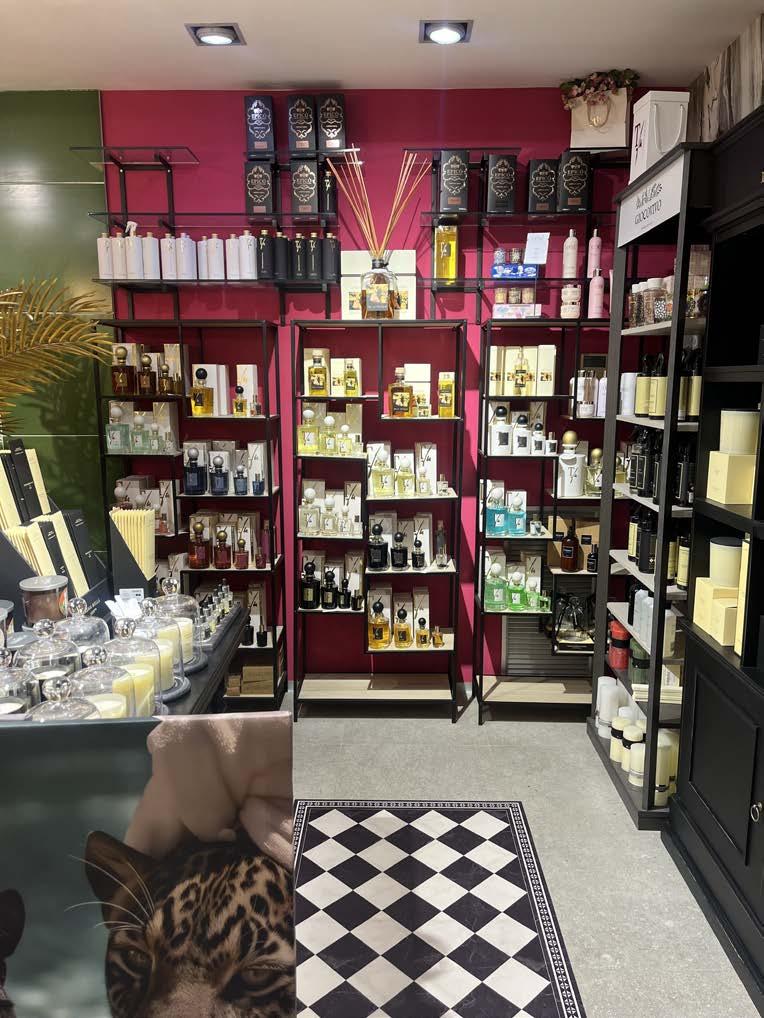

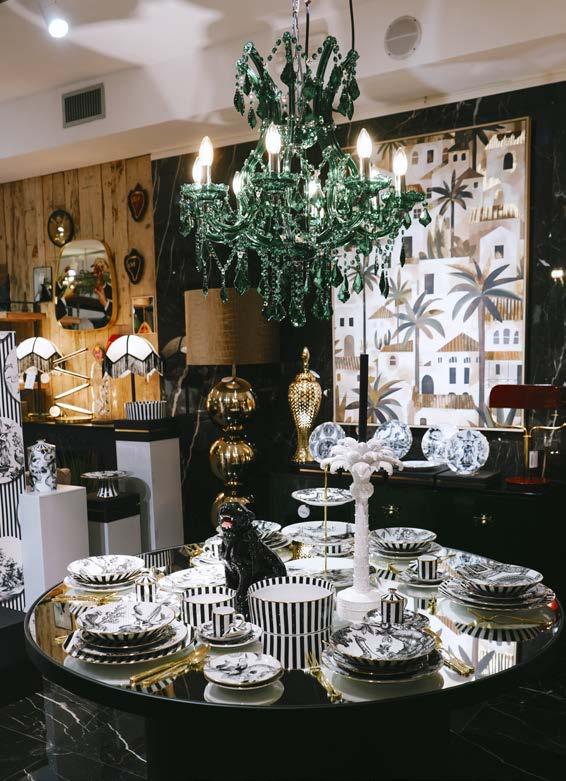
Eccentric and visionary, Marco Merola has transformed Casimiro into a brand and a contemporary concept store that stands as a true crossroads of creativity and innovation in Reggio Emilia.
A style consultant and trendsetter, Merola combines design, art and Italian craftsmanship, curating authentic and unique objects that tell stories and convey shared values.
Casimiro’s thematic windows—drawing inspiration from places, seasons, or colors—are conceived like fashion collections: from Sicily to the sea, or an exploration of green in all its nuances. A distinctive trait of the store is Merola’s ability to anticipate the seasons; by the end of August, the city already flocks to admire his dramatic Christmas windows.
Casimiro has expanded with Casimiro Essenza, a space dedicated to personal and home fragrances. As creative director of Casimiro Fragranze, Merola has also designed olfactory lines for other brands such as Belforte, pioneering the concept of “olfactory décor”, where fragrance becomes a sensory design element.
Constantly updated in terms of layout and visual presentation, the store meticulously curates every aspect—music, lighting, colors, and

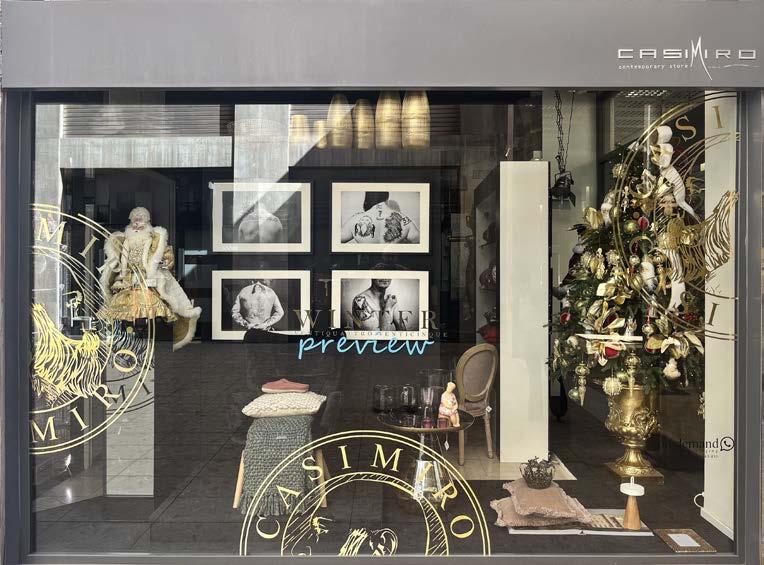

scents—to offer an immersive and welcoming atmosphere. Casimiro is not just a place to shop, but a social and cultural hub that hosts events and initiatives aimed at fostering a deeper connection with its clientele. Among them, the “Olfactory Aperitifs” stand out as unique encounters among professionals, featuring photography exhibits, videos, poetry, panettone and praline tastings paired with aged balsamic vinegar, always accompanied by a glass of sparkling wine.
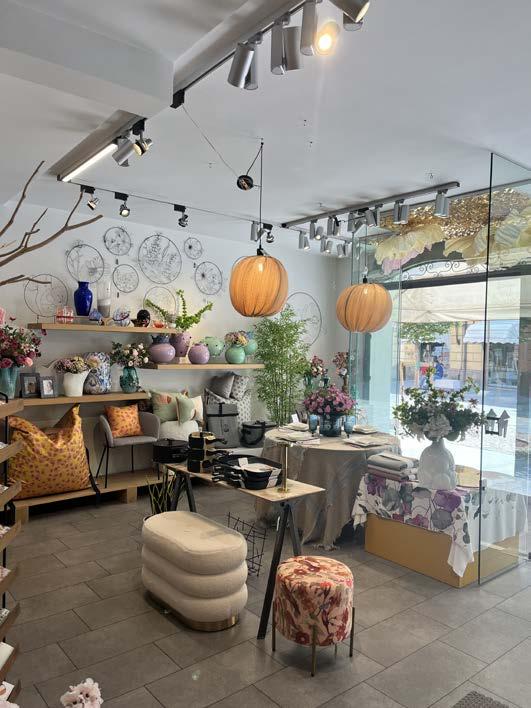
Since 1988, La Casalinga has been a goto destination for those seeking home and tableware that stand out for their quality and originality. Located at Corso Roma 22, in the heart of Carpi (MO), the store covers 120 square meters and features three windows facing the main street, drawing attention with ever-evolving and carefully curated displays. The philosophy behind La Casalinga is to offer a refined, niche selection of items—often hard to find online—combined with personalized sales assistance. The store goes beyond traditional retail by offering at-home consultations, guiding customers in selecting the most suitable pieces to complement their interiors, with the opportunity to try out products directly in their own living spaces.
The assortment features a thoughtful blend of iconic and innovative brands such as Pappelina, Alessi, Smeg, Casafina, Costa Nova, Bordallo, Vista Alegre, Riedel, Deejo, Edg, Ichendorf, Erbario Toscano, Maison Berger, Blomus, L’Oca Nera, Le Creuset, and Berndes, alongside emerging names like Lumieres di Temp and Rebirth. The result is a product mix that perfectly embodies the concept of a contemporary home—elegant, functional, and full of character. Under the leadership of Valentina Martino, the store caters primarily to a young and trend-conscious clientele, offering additional services such as home delivery, online shopping, and product customization.

With more than 35 years of history, La Casalinga continues to set itself apart by offering not just products, but a truly tailored shopping experience where consultation and attention to detail make all the difference.
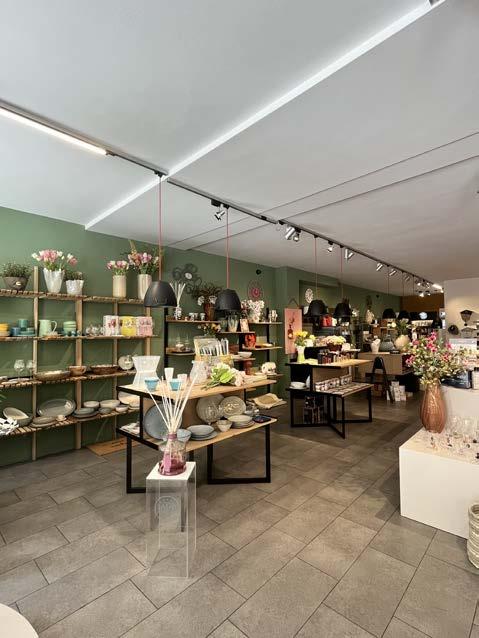

In the heart of San Giovanni in Fiore, in the province of Cosenza, Cose di Casa F.lli Gallo has been an innovative benchmark in the Italian home retail landscape since 1998. More than just a store, it offers a true visual experience that begins with its windows: spectacular displays that turn each season into an emotional narrative. Its captivating Christmas setups earned the store a Special Mention for “Visual and Window Design”. The store’s philosophy is clear: to provide everything needed to furnish and enjoy the home in one place. Housewares, furniture, gifts, dining, leisure, wedding registries, and toys all coexist in a space curated down to the finest detail. Giuseppe Gallo, a


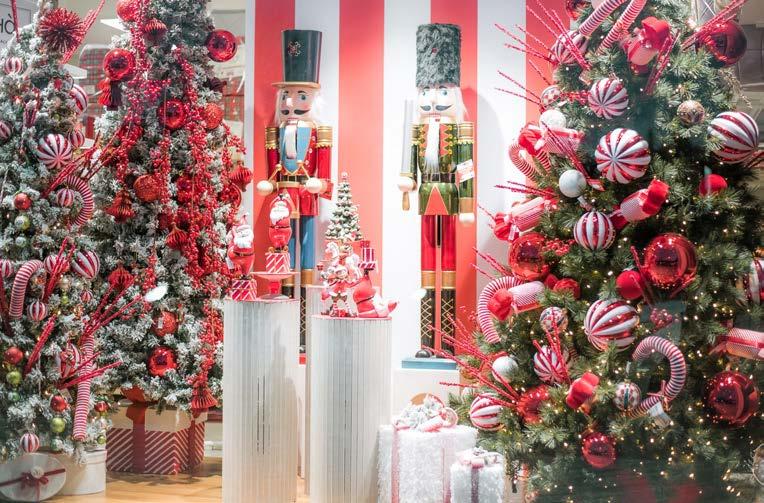
young marketing graduate who acts as buyer, marketing manager, and visual merchandiser, has infused the family business with digital expertise and a contemporary vision. The true innovation lies in product and pricing versatility: two distinct pricing tiers ensure accessibility without compromising on quality, offering premium goods alongside options for every budget. It’s a bold strategy that has created a vibrant, well-frequented space where visual merchandising crafts environments that invite immersive shopping experiences. Special events, where customers show up dressed as if for a gala, prove that Cose di Casa has turned retail into a theatre of emotions—where every display tells a story, and every visit becomes a memorable moment.
Special Mention: “Sensory Experience”. A Putia Store seamlessly combines tasting, music, and shopping, crafting an innovative format that blends a gourmet boutique with signature tableware collections under its own brand
In the vibrant heart of Ortigia, the historic center of Siracusa, a new space has emerged that blends tradition, design, and conviviality. Opened in October 2024, A Putia Store is much more than a shop: it is the natural evolution of a journey that began 13 years ago in the
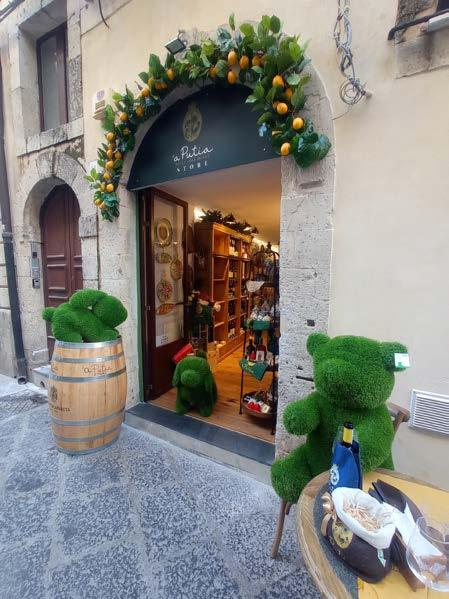

world of hospitality, now transformed into a concept that captures the flavours, colours, and style of Sicily. Located at Via Roma 8, the boutique spans just 30 square meters, with a single display window carefully designed to attract the attention of both locals and tourists. The idea

stemmed from the growing demand of the restaurant’s loyal customers, eager to purchase the same products used in the kitchen. This led to the creation of a proprietary brand, A Putia, supported by a selection of premium names such as EDG Enzo De Gasperi, Erminia Stella, and H&H Lifestyles. The product range includes everything from local specialties to tableware and accessories – tablecloths, plates, glassware, and decorative objects – all curated to turn shopping into an emotional and immersive experience. This is not just a retail space: it is a place to enjoy music, sip a glass of wine, and appreciate the beauty of carefully chosen objects. Thanks to its strategic location in the historic centre, the store has quickly built a solid international clientele, further expanded by an efficient e-commerce platform that ships products worldwide.
With a team of three and a philosophy rooted in quality, hospitality, and Sicilian identity, A Putia Store has already become a must-visit destination for those exploring Ortigia. A small yet evocative boutique that encapsulates the soul of a generous land, transforming shopping into a sensory journey beyond the act of purchase.
Special mention
“Innovative Digital Strategy” 360° interactive virtual tour for Le Cose di Casa in Olbia, which is integrating an HD browsing system to showcase every item online
Since 2005, Le Cose di Casa has been a key destination for those who love to furnish and personalize their spaces with taste and quality. Located inside the Terranova Shopping Center in Olbia (SS), the store spans 350 sqm, with five large display windows and a team of five staff members ready to welcome families with professionalism and care. The store’s philosophy is clear: to offer a wide range of merchandise that adapts to the seasons and trends. Each corner presents a different style —

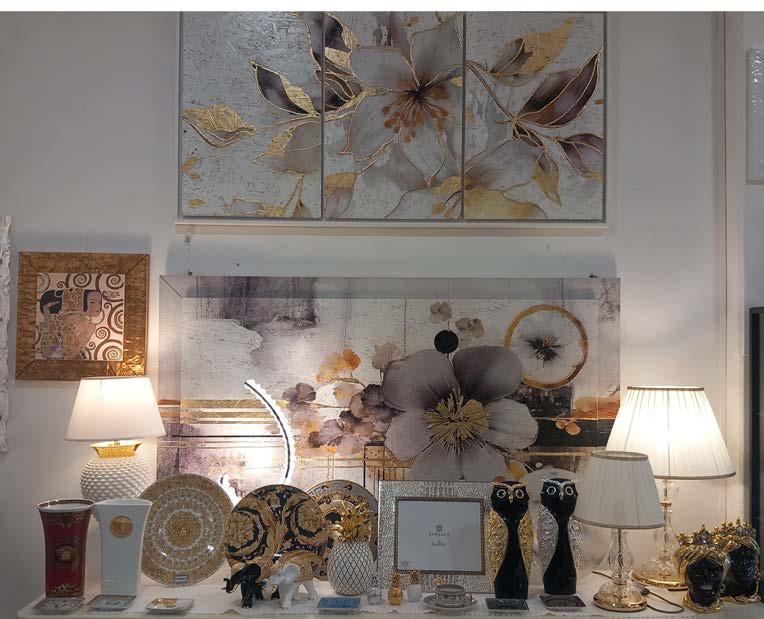
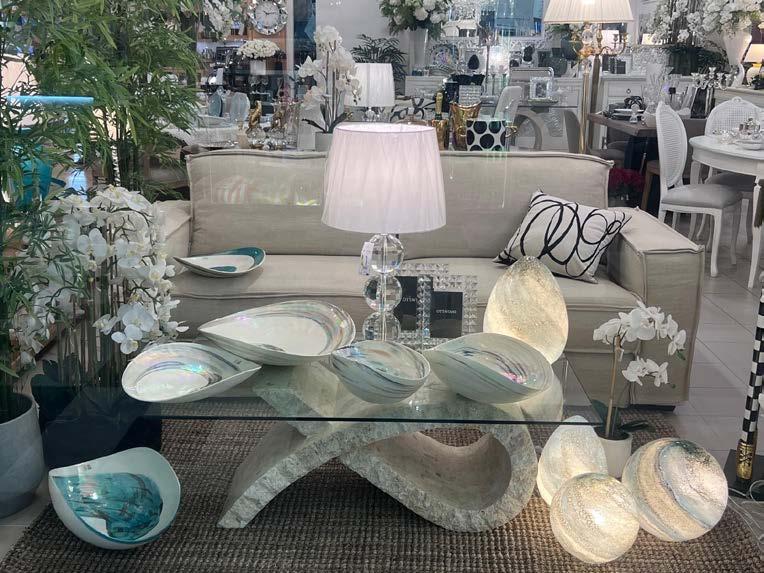
from classic to contemporary industrial, all the way to ethnic — in order to meet every furnishing need, both indoors and outdoors. The assortment includes prestigious brands for tableware and decorative objects, such as Rosenthal, Versace, Sambonet, Ottaviani, Alessi, Guzzini, Bugatti, Mepra, Zafferano, Weissestal, and EDG, alongside top names in furniture and accessories like Le Fablier, Dale, Stones, Dialma Brown, Gobetti, Rosini, and Bizzotto. For textiles, in addition to well-known brands like Casa Anversa, Arte Pura, Blanc Mariclò, Mary Plaid, and Chez Moi, the store also features local artisanal creations that authentically reflect the region. Beyond the physical shop, the website www.lecosedicasa.eu
enhances the shopping experience with an elegant and easy-to-navigate interface. By the end of 2025, an innovative high-definition Virtual Tour will be introduced, allowing customers to explore every item in 3D, effectively bringing the store into their homes. Key strengths include a layout designed by professionals to ensure a smooth visit, the seamless integration of ecommerce and the physical store as complementary dimensions, and the organization of in-store workshops aimed at engaging and building customer loyalty. Le Cose di Casa confirms its role as an essential destination for those seeking quality home décor solutions, table accessories, and textile offerings that blend elegance, innovation, and local roots.



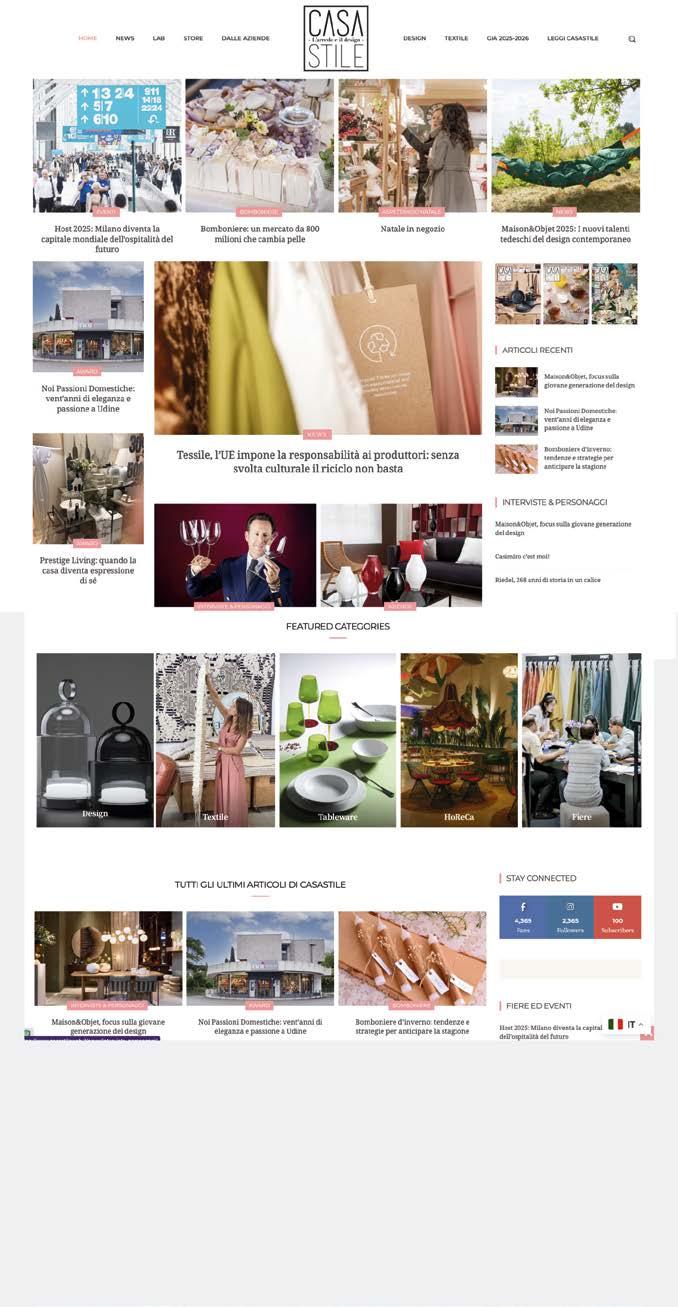

Historic textile company Dondi Home presents Buongiorno Principessa, a sophisticated new collection dedicated to beauty sleep that redefines the nighttime routine. Pillowcases and sleep masks crafted from premium 22-momme mulberry silk (the ideal density for skin and hair) harness the extraordinary antiaging properties of fibroin, a naturally biocompatible protein that stimulates collagen production and helps prevent wrinkles and unsightly sleep creases.
The silk’s perfectly smooth surface minimizes friction and tugging, ensuring you wake up with a more hydrated, radiant complexion and soft, shiny hair free of tangles. Available in three refined shades — nuvola, alba, and neve — these accessories are naturally hypoallergenic and antibacterial. A complimentary matching scrunchie is included with every sleep mask purchase. This elegant line transforms rest into a true beauty ritual — the perfect gift idea for yourself or someone special. www.dondi.it
BeTrend 2025, the leading trade fair for the Home, Décor and Giftware sectors, closed with great success after welcoming visitors from across Italy from 13 to 15 September at Hall 14 of BolognaFiere.
The B2B event confirmed its leadership in the industry, hosting Italian and international exhibitors, retailers, distributors and specialist me-
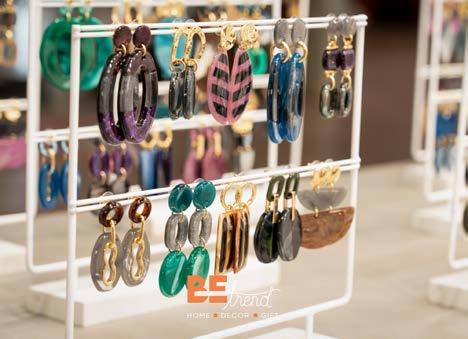

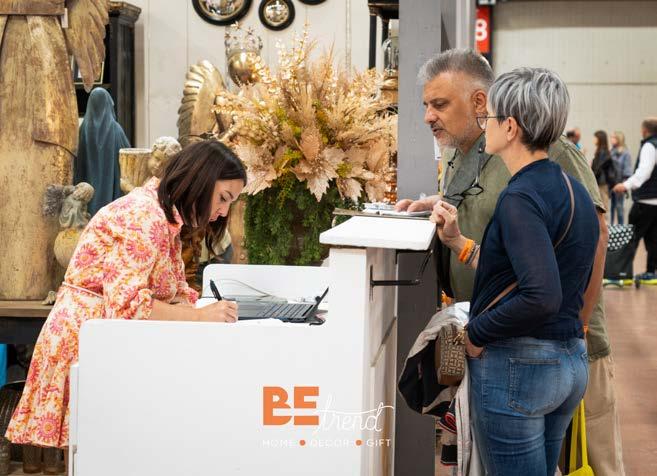
dia. Among the most popular novelties were jewelry collections embellished with pearls and silk flowers, and innovative bottle lamps made from recycled materials of prestigious labels.
There was also strong interest in home textiles and tableware and kitchen accessories, where craftsmanship and innova-
tion came together in proposals that combine aesthetics and functionality. The event area was a hit, with La Tavola delle Feste by Isa Marini and Hoon Web’s digital workshop drawing strong participation. The next edition, BeTrend 2026, is scheduled for 12–14 September. www.betrend-expo.it
For two decades, Miyabi has embodied the authentic values of Japanese culture—purity, grace, and elegance—captivating chefs and enthusiasts worldwide with knives crafted in Seki, the historic capital of samurai sword forging. Each blade undergoes a meticulous 42-day production process involving 130 steps and over 100 manual operations, transforming into a true work of art. The brand has successfully merged German engineering innovation with refined Japanese tradition, guided by the Kaizen philosophy of continuous improvement. To mark this important milestone, Miyabi introduces the 4500 FCD Mikoto knife: forged with 101 layers of FC63 san mai Damascus steel, enhanced by an exclusive diamond pattern and finished with an octagonal micarta handle symbolizing the perfect harmony between tradition and modernity. The Mikoto line, consisting of eight knife types—from compact chef’s knives to bread knives— will be launched in a limited edition at select cutlery retailers, with wider distribution planned by the end of 2025. www.zwilling.com
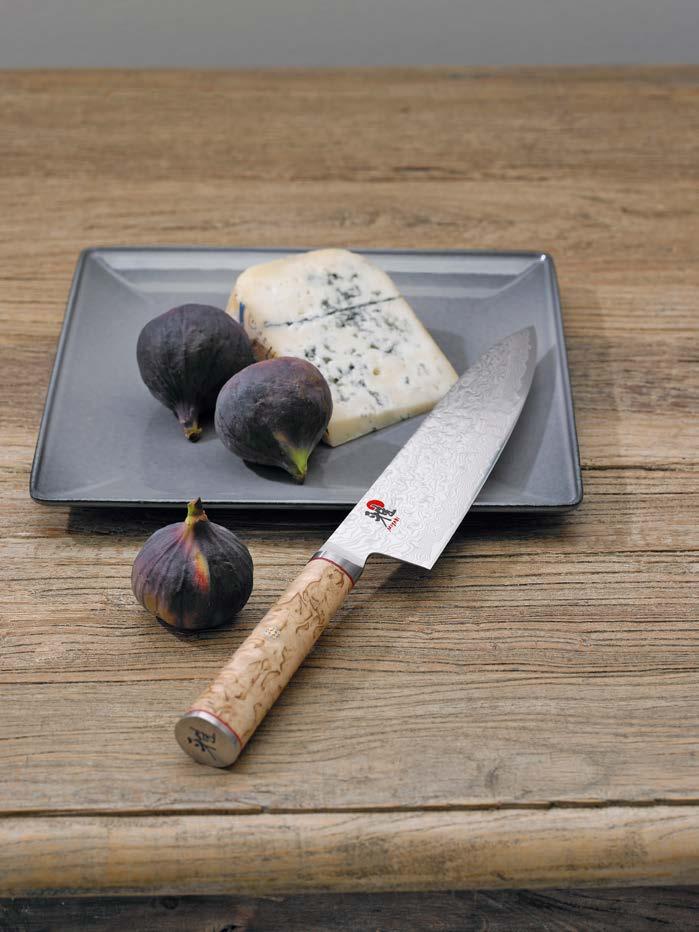
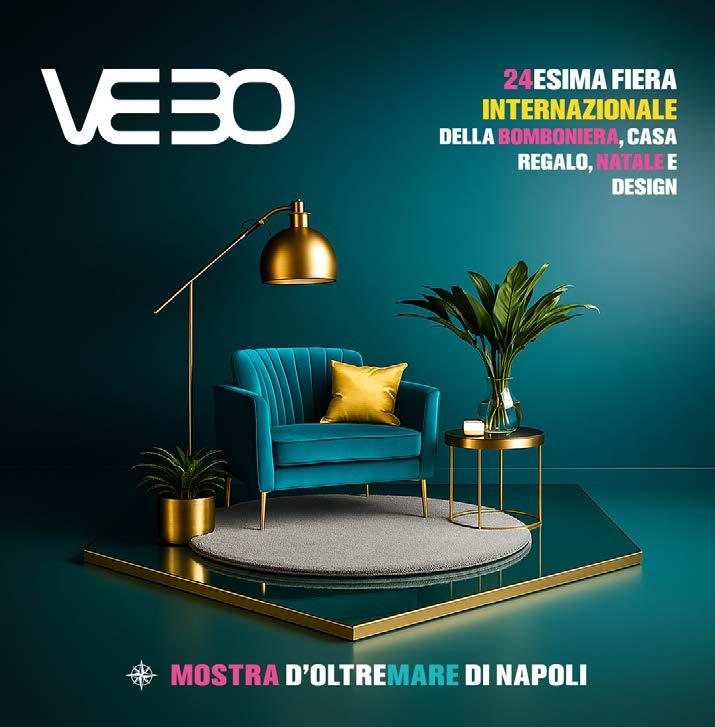
VEBO 2025: four days dedicated to the world of favors and design
The 24th edition of VEBO—International Exhibition of Favors, Home, Gifts, Christmas, and Design— wrapped up with excellent results after taking place from September 26 to 29 at the Mostra d’Oltremare in Naples. The event reaffirmed its status as a national benchmark for the sector, welcoming over 200 high-profile exhibiting companies and thousands of professional buyers from across Italy and abroad. VEBO successfully blended artisanal tradition and innovation, presenting a diverse offering that ranged from classic wedding favors to home accessories, Christmas gifts, and the latest trends in home décor. New proposals focused on sustainability and innovative design were particularly well received, further demonstrating the fair’s ability to anticipate market trends. The next edition, VEBO’s 25th, is already scheduled for 2026.
“Craftsmanship is a verb” is the manifesto of the new Heimtextil 26/27 trends, which redefine the textile industry through an unprecedented fusion between artificial intelligence and manual mastery. In an era dominated by digital precision, there is a growing, paradoxical desire for the irregularity of handmade creations, generating a creative tension that opens up new perspectives. The collaboration between Heimtextil and Alcova presents a panorama where tangible textures meet generative patterns, and natural structures dialogue with algorithms. This gives rise to the figure of the “techno-craftsman”, who sees AI not as a threat but as an extension of their creative tools. Six key trends illustrate this revolution:
– Re: media transforms drawings into digital jacquards that are then hand-embroidered;
– Visible co-work merges algorithmic design with artisanal completion;
– Sensing nature translates natural forms into patterns using digital tools;
– A playful touch recovers decorative details for pure aesthetic pleasure;
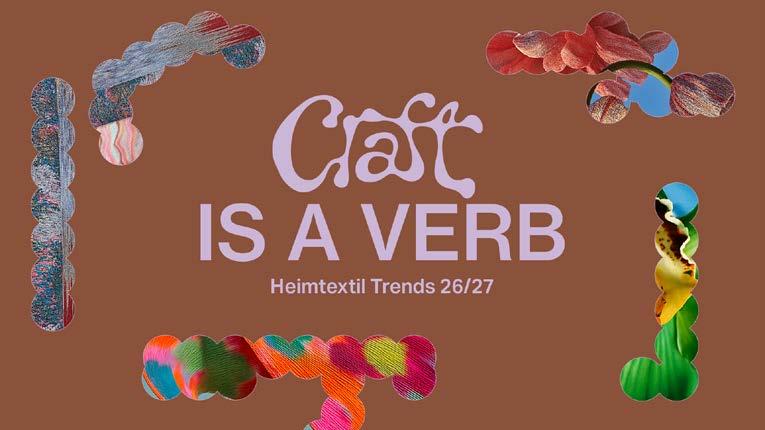
– Crafted irregularity celebrates deliberate imperfections such as knots and visible stitching;
– The uncanny valley reveals hidden technical elements with an almost alien expression. The colour palette reflects this duality: earthy tones like sand and clay are interrupted by synthetic accents such as acid green and digital blue, creating chromatic “glitches” that produce vi-
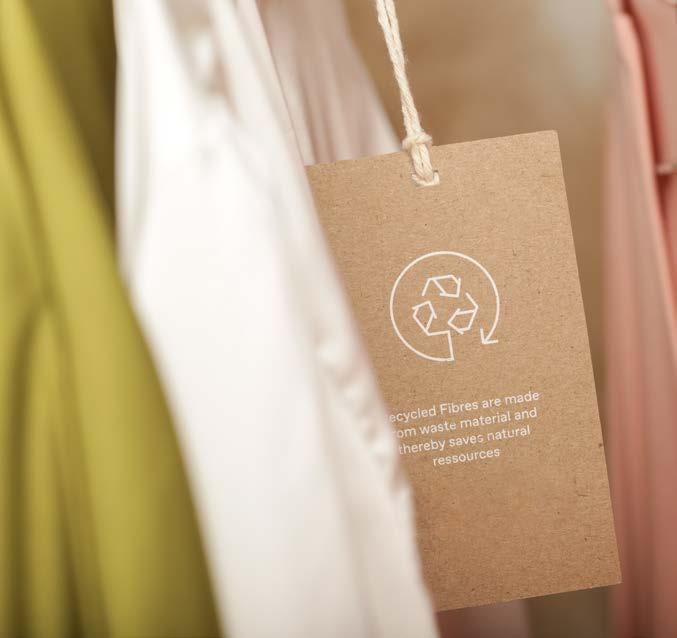
sual tension. “The trends provide impulses for sustainable methods and future strategies,” explains Olaf Schmidt of Messe Frankfurt. From 13 to 16 January 2026, the Trend Arena in Frankfurt will present this textile future interactively, where innovation and tradition blend harmoniously. www.heimtextil.messefrankfurt.com
On 5 September, the European Parliament approved the revision of the Waste Framework Directive, introducing a mandatory Extended Producer Responsibility (EPR) scheme for the textile sector across all Member States. Producers will be required to finance the collection, sorting and recycling of textile products placed on the EU market, including clothing, accessories, footwear, hats, blankets, bed linen and curtains — with a possible extension to mattresses. Member States have 20 months to transpose the directive into national law and 30 months to establish operational EPR systems (micro-enterprises benefit from a 12-month extension). The EU currently generates 12.6 million tonnes of textile waste per year (12 kg per person), but less than 1% is actually recycled. Producer fees will be adjusted to discourage fast fashion. In addition, producers will be required to map waste streams, define donation protocols and reinforce eco-design practices to ensure greater durability and use of recycled content. The directive shifts end-of-life management costs to producers and marks a concrete step towards accelerating the transition to more sustainable circular models.




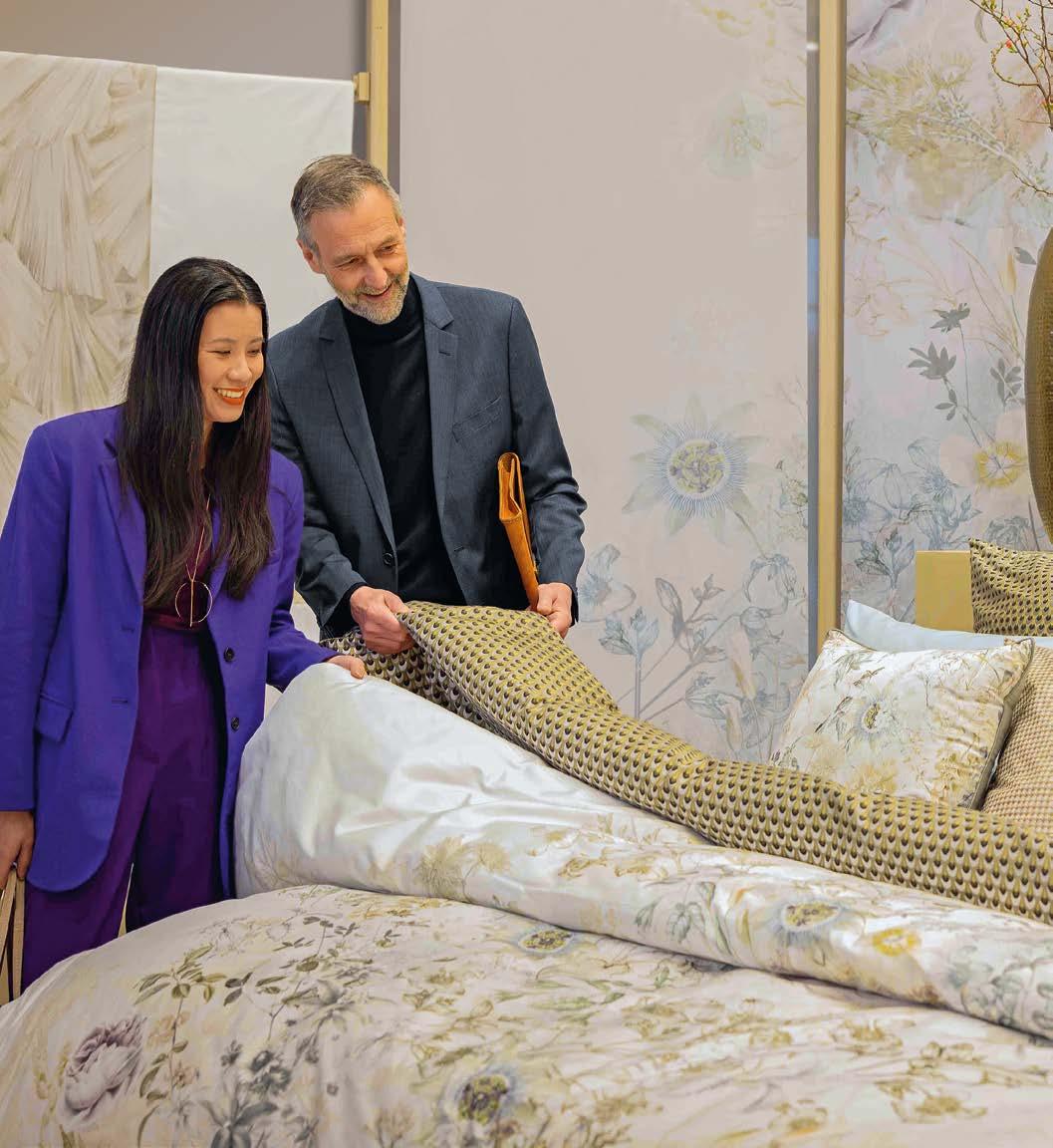

Following the full acquisition of Mascagni Casa on 31 March 2025, Pozzi Milano has announced the launch of a merger project that will see the historic Bologna-based company incorporated into the Group. This move marks a significant step towards creating an even stronger player in the home décor and giftware sector. Founded in 1930, Mascagni Casa is known throughout Europe for its photo frames and decorative accessories, with export accounting for approximately 20% of its turnover. Pozzi Milano is a well-established player in tableware and giftware, with the EasyLife brand present in over 70 countries and a product offering that blends fashion, creativity and affordability.
The merger will allow the two companies to leverage their combined strengths: a broader, more coordinated catalogue; streamlined logistics, operations and sales management; and enhanced competitiveness both in Italy and abro-

ad. The Mascagni Casa brand will continue under Pozzi Milano’s leadership, enriching the Group’s overall offering with its own heritage and identity.
For retailers and industry professionals, this means access to a wider assortment ranging from fashionable table collections and gift items to photo frames, seasonal decorations and home accessories — all while maintaining the distinctive quality and style of both brands. Fabio Sanzogni, CEO of Pozzi Milano, emphasised that the company is continuing its growth path through external lines, integrating complementary businesses and strengthening the Group’s ability to meet the evolving needs of the home and décor market.




Horomia introduces CIRCLE, the new scented car diffuser that combines Made in Italy design with fragrances inspired by the beauty of the Italian territory. The device, crafted from high-quality aluminium with a magnetic system, attaches seamlessly to the car's air vents. CIRCLE comes in four elegant finishes (Black, Satin, Chrome, and Butter), each paired with a fragrance dedicated to an iconic Italian location: L’Oro di Navelli for L’Aquila (with notes of saffron and oud), Aperitivo in Piazzetta for Capri (fig and amber), Riviera dei Cedri for Diamante (Calabrian citrus), and Lungarno for Florence (iris and Damask rose).
The diffuser is fully customisable with inserts in sustainable leather, available in 12 colours, and can be refilled using any of the eight pre-

mium fragrances from the Horomia collection, celebrating destinations from Milan to Cagliari. The system ensures up to two months of continuous fragrance. www.horomia.it

The autumn edition of Intertextile Shanghai Home Textiles 2025 concluded with resounding success, marked by a significant increase in international participation. Nearly 900 exhibitors from 20 countries welcomed over 35,000 visitors from 116 nations. Eight countries made their debut at the fair: Bulgaria, Egypt, Finland, Indonesia, Iran, Malaysia, the Netherlands,


and Vietnam. Exhibitors reported a boost in orders and new partnerships, confirming the vitality of the market.
Sustainability and innovation were key themes, highlighted by the launch of the new “Future & Textile Zone”, which explored the integration of textiles and artificial intelligence. Major buyers attending the event included IKEA, H&M, Walmart, and Xiaomi.
The fair also featured seminars on design and sustainability, reinforcing its role as a leading platform for the home textile industry in Asia.
Fazzini: colour awakens the soul in the autumn-winter 25/26 collection



The Italian bedroom linen brand Fazzini unveils its new Autumn-Winter collection, where colour takes centre stage to spark creativity and evoke deep emotions. Inspired by the colour fields of Mark Rothko and the expressive languages of the Global South explored at the Biennale curated by Adriano Pedrosa, the collection introduces new chromatic directions that invite everyone to express their own idea of beauty. This season’s key colours include yellow, appearing in the collection for the first time, ranging from radiant gold to warm pumpkin hues, and burgundy, which, alongside renewed shades of green, creates ancestral atmospheres. Highlights of the collection include NEMORA, inspired by mythical forests; PROTEA, a tribute to South African nature; and SABI SABI, which interprets the Japanese Wabi-Sabi philosophy. The colour project is enhanced by refined fabrics such as sateen and percale, where solids and patterns come to life, bringing fresh energy to living spaces—from vibrant luminosity to deep tones that echo humankind’s primordial roots. www.fazzinihome.com
CONTINENTA GmbH, the German company specializing in wooden and ceramic kitchen and tableware accessories, announces a reorganization of its commercial operations in Italy. The goal is to strengthen the brand’s presence in the national market and consolidate relationships with distribution partners. In recent years, the CONTINENTA brand has been successfully represented in Italy by the family-run company Schönhuber as a traditional distributor. As part of the restructuring of its sales organization, Italian retail partners will now be served directly. The portfolio of the Wiedenmann sales agency includes renowned brands such as Spring, Bre-
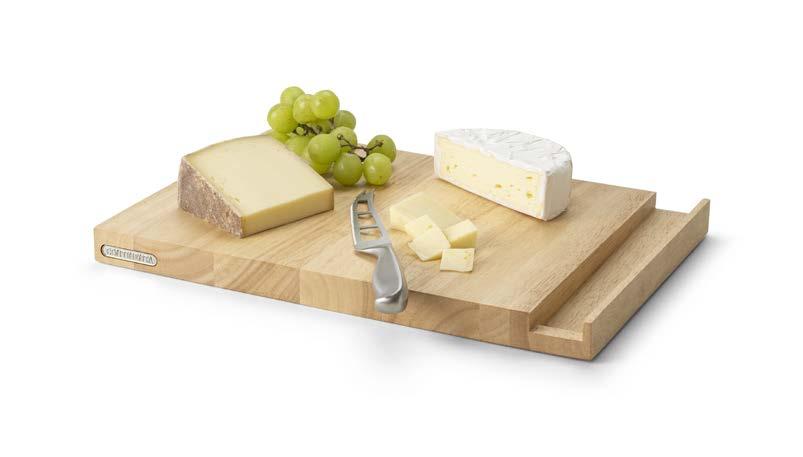
demeijer Group, and Glashütte Eisch. CONTINENTA’s high-quality collections made from wood, ceramic, and the sustainable recycled material Duracore perfectly complement the sales experience.
“We look forward to working with Giorgio Wiedenmann, who brings many years of experience in the industry, and to jointly expanding CONTINENTA’s brand presence and recognition in Italy,” says Liese Herzog, Head of Sales at CONTINENTA GmbH. www.continenta.de

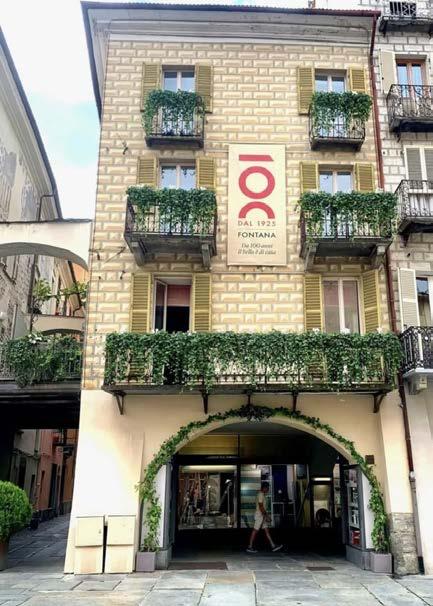
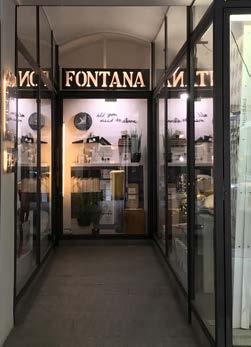
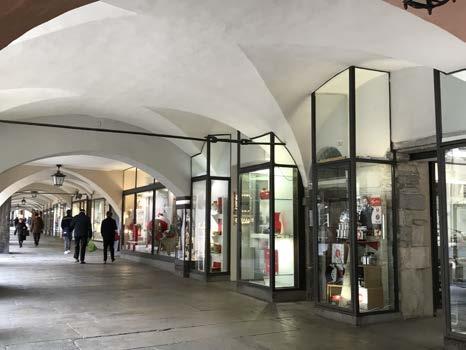
The Fontana store in Cuneo is celebrating an extraordinary achievement: 100 years of commercial activity. Located at Via Roma 60, in the heart of the historic center, this store is a true gem of Italian entrepreneurial tradition.
Founded in 1925, the store is now managed by the third generation: sisters Gisella, Anna, and Paola. Housed in a 17th-century building, the shop spans three floors with no fewer than 20 display windows, turning the façade into an ever-changing stage for passersby.
The three sisters have successfully combined tradition and innovation, traveling the world in search of the best ideas in design and home décor. Their commitment was also recognized in 2017–2018 with the Casastile Global Innovation Award, which gave them the opportunity to represent Italy at the international fair “The Inspired Home Show” in Chicago.
More than just a retail space, the store offers an immersive experience in the world of housewares, where each floor tells a different story through meticulously curated displays. A century of excellence that continues to shine in Cuneo’s commercial landscape.



FIO capsule vases designed by Foster+Partners. Handcrafted borosilicate glass with interchangeable lids.
Ichendorf Milano
Vase from the Micromondo Collection, Metakeramos.
The glazes used are made by recycling beech wood ash, a waste material from pizza oven cooking.
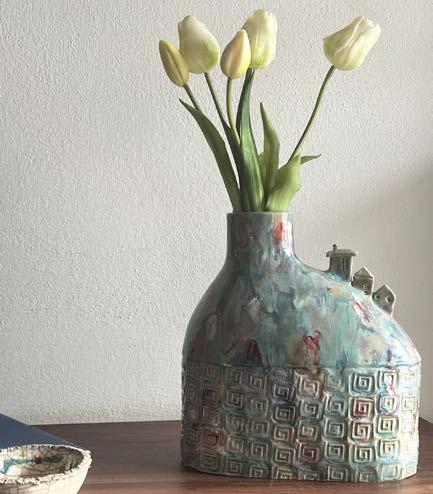
ilano Home confirms its role as the meeting point for the entire home sector community—a place where manufacturers, distributors, top-tier artisans, interior designers, and independent retailers come together to exchange ideas, build relationships, and access the tools they need to grow. This B2B experiential event, launched in Italy with an international outlook, is designed to enhance traditional retail and support it in facing future challenges through original assortments, targeted services, and an offering that blends authenticity, quality, and innovation.
Across the four pavilions of the fair, style and trend-driven proposals coexist with unique objects, solutions for the kitchen and table, and creative ideas to furnish and narrate the home. Among the highlights are refined textile collections, contemporary tableware accessories, and playful, ironic décor pieces—objects that merge design with functionality: from acrylic centerpieces that turn fruit into sculpture, to vibrantly colored vases, whimsical candelabras, and dynamic figurines that blur the line between art and play. There are also new interpretations of bedroom aesthetics, featuring prints inspired by nature or Japanese tradition, along with collections that recall precious textures such as galuchat or present fine cotton sateens in soft, delicate hues. A focus on materials—from recyclable polypropylene to highly tactile finishes—intertwines with the growing demand for sustainability, while Made in Italy remains a distinctive hallmark of quality.
Milano Home also responds to the need to engage with new generations, increasingly drawn to conscious design. Digital communication, fresh languages, and storytelling that highlights objects as spaces for innovation bring younger audiences closer—not only as customers but as future professionals in the field. In a market that, following the post-pandemic acceleration, continues to grow by emphasizing personalization and utility value, the fair proves to be a strategic ally for those looking to build competitive assortments and inspire new ways of living the home. The next edition of Milano Home will take place from January 22 to 25, 2026, at Fiera Milano. More info: milanohome.fieramilano.it
by Giulia Arrigoni

With a consolidated leadership in Italy and a strong presence in international markets, Guardini closed 2024 with €15.6 million in revenue and estimates a 17% increase for 2025. At the helm are Elena and Marco Guardini, focusing on sustainability, quality, and specialization
Guardini’s history began in the post-war period, in 1947, when Luigi Guardini opened a small metalworking workshop with his brothers in a courtyard in the center of Turin. In the 1970s, the company transitioned from a craft workshop to an industrial operation under his son Giovanni Guardini, with a new factory in Borgaro Torinese. In the 1980s, as household appliances spread in Italian homes, Guardini focused on baking trays, introducing non-stick coatings and automation te-
chnologies. In the following decade, the company moved to its current factory in Volpiano (TO), and in the 2000s, the third generation joined: Elena and Marco Guardini, along with a new 17,000 m2 headquarters. In 2024, the company closed the year with over €15 million in revenue and expects to reach a 17% increase in 2025. Casastile met with Elena Guardini, CEO of the company – alongside her brother – to talk about history, markets, sustainability, and future prospects.
Guardini, third generation in charge…
Yes, today my brother Marco and I run the company, even though our father, now 85, remains president and is still very much present at the company, even if no longer operational. Marco and I are both managing directors with different roles: he oversees production and R&D, while I handle administration, finance, sales, and marketing.
Guardini’s core business
Has Guardini’s core business changed over the years?
No. Since my father's insight in the 1980s, Guardini has remained vertically specialized in the production of baking molds, mainly made of

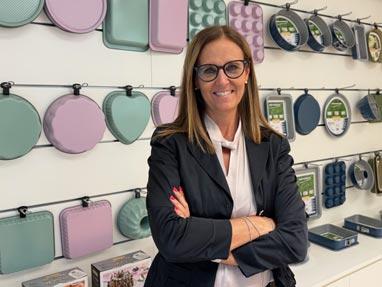
steel with non-stick coating, which we manufacture in our Volpiano plant. In addition to steel, we also sell products made of silicone, borosilicate glass, ceramic, disposable paper, and plastic, all related to oven baking.
Have you ever thought about expanding the product range?
We were tempted—at one point we considered pans—but in Italy the main pan producers are extremely strong. It’s a saturated, highly competitive market where controlling the entire supply chain is essential. We decided not to pursue it, choosing instead to stay focused on baking molds, where we are market leaders in Italy and among the top players in Europe.
Has China become a major competitor in this segment too?
Yes, it is very present now, offering increasingly better quality at competitive prices. Fortunately, not yet at our level, and still far behind in terms of service. It’s weaker financially, slower in lead times, and impacted by volatile shipping costs. However, it is advantageous price-wise—especially after the recent spikes in raw material prices in Europe post-COVID. Since GDO price pressure is high, this obviously erodes margins.
What does your commercial presence look like?
Our main channel is large-scale retail (GDO), which accounts for around 60–70% of our revenue. We work with European retailers like Auchan, Carrefour, System U, Nordic Coops, and almost all the chains in Italy—some under private label, some with our brand. We handle the specialist trade through wholesalers, and also work on loyalty campaigns with GDO, some third-party manufacturing, and more recently, online sales. We have our own e-commerce platform, but most of our digital sales are through Amazon and other marketplaces. Digital currently has a small share, but we see it growing.
What’s its current share?
No more than 1.5% of our revenue at the moment.
You have a significant share of exports. Which countries are involved? And how is the market performing overall?
Today, exports account for about 60–70% of our business. In addition to Europe, we work with

North Africa, the Middle East (Saudi Arabia and the UAE), and, to a lesser extent, the US. Markets aren't very dynamic right now—in fact, the sector is rather static. The only recent trend to stir things up is the air fryer, for which we developed a range of dedicated accessories in paper, silicone, and steel.
How has your assortment evolved?
We have about 500–600 SKUs. Bestsellers include springform cake pans, baking trays for la-
sagna, pizza, and tarts. In the 2000s, we focused heavily on design and color, but today performance, non-stick quality, and sustainability are the top priorities, with more neutral colors.
About sustainability—what about PFAS? What are you working on in this regard?
Sustainability is a key focus. For the past three years, we’ve voluntarily issued a sustainability report. It helps us measure progress and position ourselves as a reliable partner in a supply chain that large retailers expect to be increasingly transparent and responsible. In terms of materials, we were among the first in Europe to offer
PFAS-free lines. Today, we offer both traditional products and alternatives in uncoated steel, anodized aluminum, or tinplate to meet the needs of more conscious consumers.
Is the future PFAS-free?
In my opinion, no—but it's hard to say. There are around 10,000 types of PFAS, all very different, and industry associations are working hard to avoid sweeping generalizations.
How much does “Made in Italy” still matter today?
It's hard to quantify. We don't know whether cu-

stomers choose us because of the consumer's perception of Italian quality or more for the product and service reliability. Certainly, in markets like North Africa and the Middle East, “Made in Italy” and the Guardini brand are seen as premium. In Europe, large-scale retail logic prevails, and price remains the key factor.
How have the past few years gone?
We saw a boom during COVID, followed by a sharp decline in 2023, with full warehouses and halted orders. In 2024, the market began to stabilize, and this year we’ve seen steady growth, with monthly revenues increasing. We closed 2024 at around €15.6 million and expect to reach about €17 million in 2025.


And future plans?
We’re about to launch a new line of steel molds designed for air fryers and a series of uncoated products as an alternative to non-stick coatings. We’ll be present at major trade fairs—from Ambiente in Frankfurt to Milano Home—with a special focus on loyalty campaigns. We're looking ahead, aiming to combine tradition and innovation, defend our market position, and invest in quality, sustainability, and specialization.
by Fabio Destefani

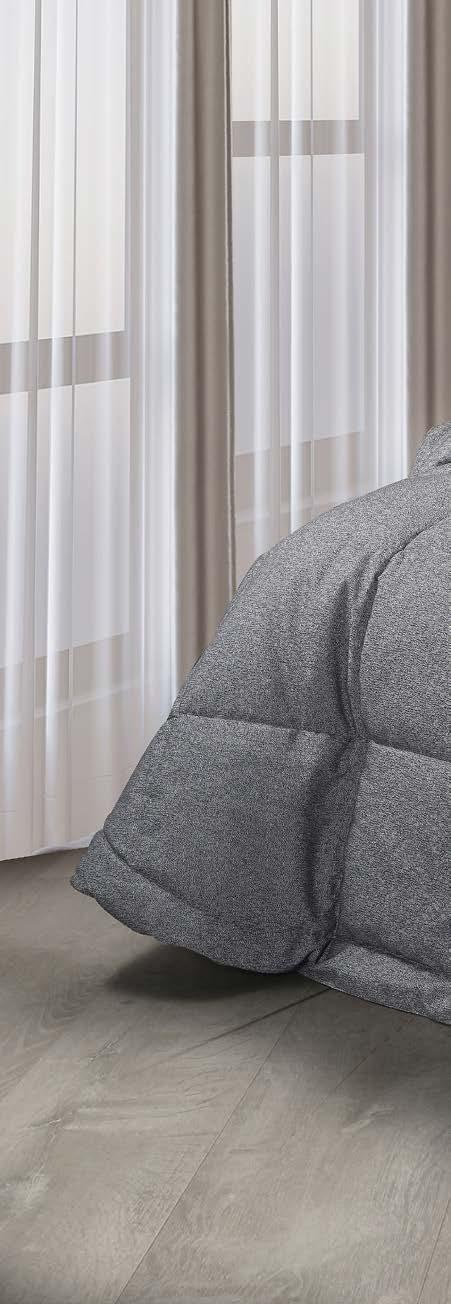
Sleep, as we all know, is a crucial part of every individual’s life, as it allows the body and mind to rest and recharge in preparation for the next day’s activities. But to ensure that sleep is truly restful and restorative, bed coverings such as duvets, quilts and toppers are essential to guarantee the right level of comfort.
The duvet has ancient origins; it is believed to have been invented in China during the Song Dynasty, around 960–1279 AD. Even back then, the Chinese had discovered that goose fea-


thers provided excellent thermal insulation, along with other qualities such as lightness and the ability to retain body heat during winter nights. Since those ancient times, the duvet has evolved significantly thanks to new materials and technologies, improving its insulating and breathable properties as well as its durability. Today, duvets are also available in synthetic materials, but the ones offering the highest level of comfort should ideally be filled with 100% goose down – the finest part of the plumage – a material that absorbs the humidity generated under

the covers and releases it into the air. The quilt, often confused with the duvet, has different characteristics. Both types of bedding can be filled with synthetic fibres or natural materials, but their construction differs. Quilts are made by stitching a layer of padding between two layers of fabric, creating the typical quilted effect.
They are available in a wide range of styles and are suitable for different seasons, offering versatility in terms of weight and warmth.
While duvets are more traditional and luxurious, quilts are valued for their practicality and variety of designs. The choice between a duvet and a quilt therefore depends on personal prefe-

Iglù ri-generazione by Hammerfest is a quilted down blanket made using recovered, recycled, and reworked fillings and fabrics.
rences and specific warmth requirements. There are also differences in care and maintenance. Duvets, whether filled with natural down or synthetic materials, can generally be washed at home in the washing machine. This is not always the case for quilts, due to their often large size – which may not fit in a washing machine –and covers that may only be suitable for dry cleaning.
Drying requires special care: the down must be thoroughly dried to avoid clumping. For this reason, it’s important to shake the duvet occasionally while it dries. The correct method of washing is with water.
Another key element for bedding is the topper –a thin padded mattress layer, typically 3 to 7 cm thick, placed between the mattress and the mattress cover. Its purpose is to ensure maximum comfort during sleep. It also helps provide a drier sleep environment by absorbing moisture between the body and the mattress, while acting as an effective barrier against cold or damp air rising from beneath the bed.
The filling may be made from various natural or synthetic materials. Natural fibres include feather, down, wool, cotton and blended compositions. The cover is usually made of cotton. It is advisable to clean the topper with a vacuum cleaner, shaking it well every time the bed linen is changed. Finally, the filling material should not be exposed to heat or direct sunlight.


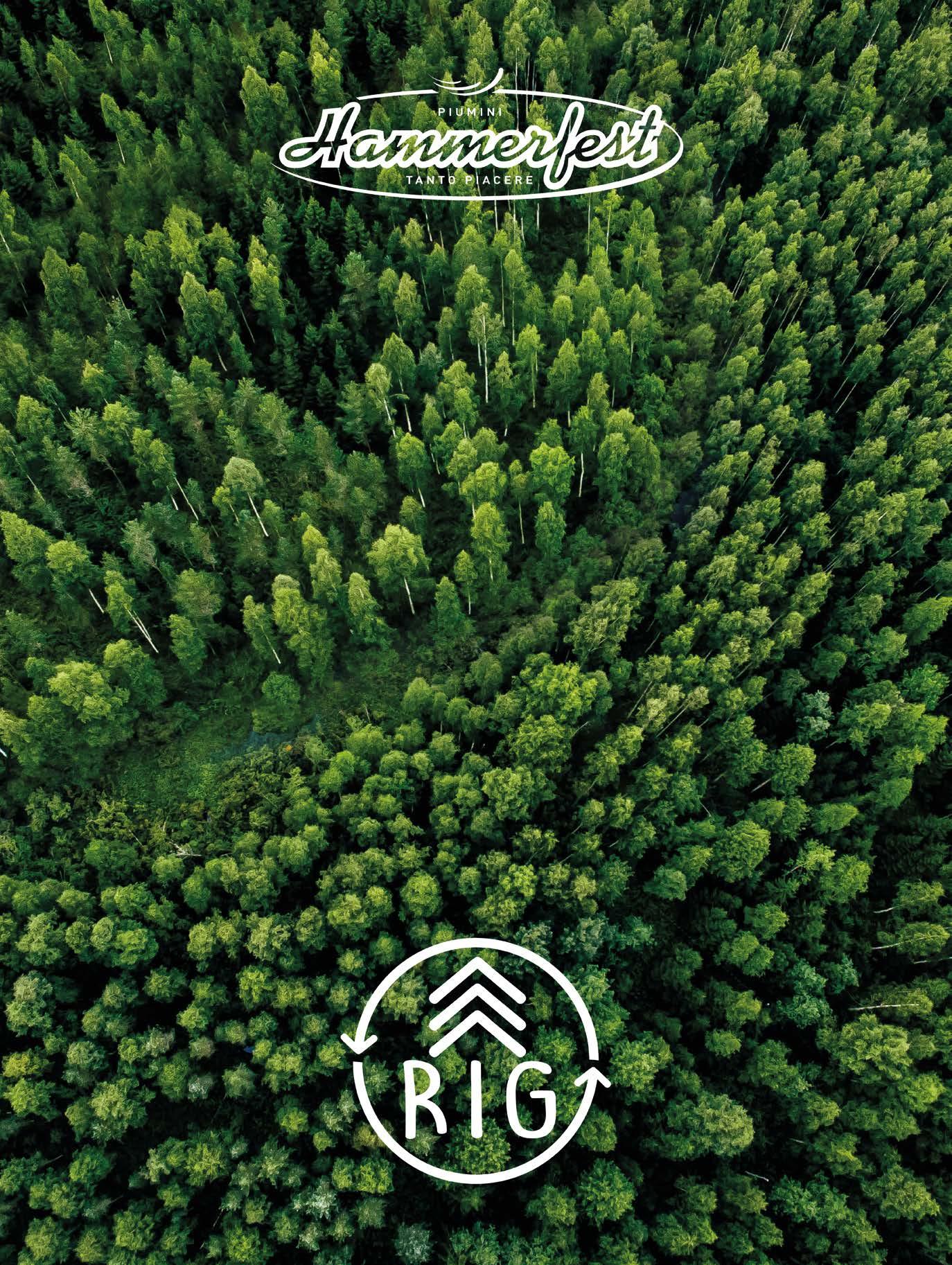
Sleeping well isn’t just about comfort. It’s a choice that reflects quality, beauty, and respect for the environment. Hammerfest builds its future on these values, turning duvets, quilts and home accessories into an invitation to sustainable well-being

Sleep is one of the most precious moments of our day. When we surrender to rest, we deserve to be enveloped by materials that not only soothe us, but also respect the world around us. This is the philosophy behind Hammerfest, a company that has made sustainability the beating heart of its production mission. In an age when environmental responsibility is no longer optional, Hammerfest has chosen to follow a path that balances comfort, aesthetics, ethics and well-being. Each product is born from a thoughtful reflection on how rest can become a gesture of care—for ourselves and the planet.
The natural science of comfort
Ending a long day by slipping under a quality duvet means immersing yourself in an experience that turns the bedroom into a true oasis of wellness. The best materials are those that nature provides: high-quality down and fine fabrics that, when expertly crafted, retain their properties season after season.
A complete range of weights allows for a smooth transition from lightweight, breathable summer models to warm, enveloping winter duvets—following the natural rhythm of the year. When it comes to temperature regulation, down remains unmatched: it naturally balances body

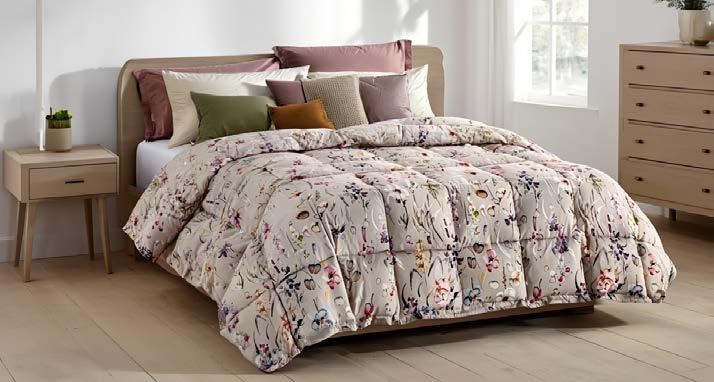
temperature, absorbs moisture, and delivers that breathable sensation that defines the deepest sleep. Nomite and Oeko-Tex certifications are proof that every product is designed with the highest safety standards in mind.
Quilts represent the evolution of this philosophy: where sustainability meets design, creating home accessories that redefine bedroom aesthetics. Fine fabrics and high-quality fillings come together in unique creations, where every colour tells a story of research and passion.
A wide range of colours, patterns and sizes allows for personalized interiors, while pillows, cushions and throws complete a comfort ecosystem that turns any home into a sanctuary of conscious beauty.


Sustainability is also expressed through the ability to offer smart alternatives. Products made from cotton, wool, and other fibres provide practical and versatile solutions for those seeking the same quality in different forms.
Fully customizable options—from size and fabrics to fill weights and finishing details—showcase an approach that sees every customer as unique.
www.hammerfest.it

Choosing Hammerfest means choosing a product that goes beyond mere quality. Every stage of the process is designed to minimize environmental impact—from the selection of raw materials to the final packaging. The RDS (Responsible Down Standard) and GRS (Global Recycled Standard) certifications are not just quality labels, but a tangible commitment to practices that respect animals, the environment, and people. They are a guarantee of a transparent and responsible supply chain. Every quilt, duvet, or accessory is made to last, reducing waste and encouraging more mindful consumption.
In an increasingly fast-paced world, indulging in the luxury of quality rest—wrapped in materials that are durable and environmentally respectful—is no longer just a comfort choice: it is an act of love for ourselves and for future generations. The perfect balance between what we desire today and the world we want to leave behind tomorrow.


of design
by Giulia Arrigoni
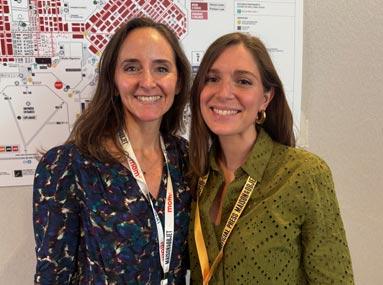
Interview with Julie Pradier, Marketing and Communications Director, on the revamped format of the Paris fair, which now distinguishes the January and September editions

From September 4–8, 2025, Maison&Objet took place in Paris, the international event dedicated to design, décor and lifestyle. We spoke with Julie Pradier, the fair’s Marketing and Communications Director, about the new structure of the event, its connection with Paris Design Week, and the evolving role of trade shows in the industry.
The fair has just started—how is this edition going so far, and what are your expectations? We opened yesterday, and the first two days have been very positive. The main novelty is the new format that clearly differentiates the two annual editions: September is now dedicated to the new generation—emerging designers and a fresh, vibrant atmosphere—while January is more institutional, focused on iconic and highend design. Visitors had often asked us for the opportunity to meet new brands and discover unreleased products. This restructuring directly responds to that need.
What feedback have you received so far?
The response has been very encouraging. Many attendees appreciate the chance to meet young brands and designers they hadn’t seen before. It enriches the visitor experience and creates new opportunities. This year, we also strengthened our bond with Paris Design Week by connecting the two events: more than 130 emerging talents are exhibiting both in the Factory area of the fair and at locations throughout Design Week. Toge-

ther, they form a true hub for the new generation of creatives.
As an Italian, it’s natural to compare Maison&Objet to Milan’s Salone del Mobile and Fuorisalone. Here, though, it seems young talent plays an even more central role. That’s true, but I believe it's important to highlight how different Milan and Paris are as events. Milan is still very much a business-oriented show, whereas Maison&Objet attracts many interior designers, concept stores and boutique retailers who come here to explore and be inspired. That’s why our audience feels younger and more creative compared to other European events. The atmosphere here is more informal, with a stronger focus on discovery and networking.

In recent years, the trade show sector has faced serious challenges, especially due to the pandemic. Is this new format a response to those shifts?
Absolutely. After Covid, there was a belief that everything could just return to how it was—but that wasn’t the case. Reinvention was essential. This new organization is the result of that realization: Maison&Objet is not only about business and market trends, but also about inspiration and experience. We aim to offer a space where professionals can make meaningful connections, fuel creativity and build relationships, as well as grow their business.
Key Highlights
Dates: September 4–8, 2025, Paris.
Theme focus: Young designers, new brands, innovation, and annual focus on the Cook & Share tableware sector.
Link with Paris Design Week: 132+ emerging talents showcased in Factory areas.
Target audience: Interior architects, concept stores, décor boutiques, independent professionals, creatives.
New dual-format approach:
September: Emerging talent, freshness, experimentation, object and décor focus
January: Iconic brands, collectible design, highend furniture and interiors

The recent edition of Maison&Objet (10–14 September 2025) once again confirmed Paris as the international capital of design and decoration, with 2,125 exhibiting brands (including 626 new entries) and over 51,500 visitors from 138 countries. The event showcased a reorganized offering structured into six thematic areas – from tableware to fragrance, from design to craftsmanship – reflecting a supply chain that is increasingly dynamic and evolving
Aby Giulia Arrigoni
longside impactful installations –such as “Welcome Home” by Amélie Pichard – and scouting areas dedicated to emerging designers, the exhibition served as a privileged observatory for understanding the current state of the industry, amidst signals of renewal and market challenges. Italy remained one of the top visiting and exhibiting countries, confirming its central role in the sector. Casastile took the opportunity to gather some feedback not only on the fair itself but also on market trends in this 2025.
The fair from the exhibitors' perspective Many professionals emphasized how the choice
between the September and January editions depends on the brand's positioning. “For us, September remains a strategic appointment, especially for the French market, which is our most important after the Italian one,” said Cristiano Arcucci, owner of Arcucci. At the same time, Maria Livia Giusti, owner of Marioluca Giusti, observed that the two events are complementary: “In September, more buyers come looking for Christmas purchases, while January remains more linked to summer collections.”
For Massimiliano Guzzini and Sergio Grasso, respectively owner and CEO of Guzzini, September is useful for targeting the holiday season, despite a difficult context: “2025 has been a

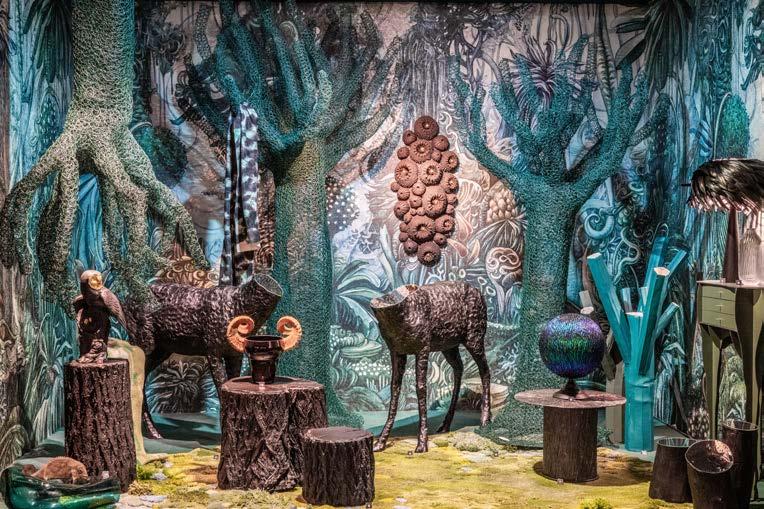
good year, but there’s a sense of contraction in the air. The challenge is to maintain democratic, accessible design while keeping costs down without passing them on to the consumer.”
Fabio Sansoni, CEO of Pozzi Milano, confirmed the strategic relevance of the holiday season: “The market is split in two: it's slower until May, then everything picks up during the giftgiving period. Christmas has become a crucial time globally.”
From the home fragrance sector, Matteo Iantoschi, owner of Erbolinea, noted that the market remains positive: “We’re cautious, but the home-living education process that began during the pandemic is still paying off. Today, exports account for 20% of our turnover.”
Even emerging brands see Paris as a strategic platform: Francesco Claudio Mazza, EU sales manager of Xinzuo, highlighted the growth of the Chinese cutlery brand, with double-digit annual increases and a competitive position thanks to a blend of artisanal quality and optimized cost structures.
In the glassware sector, Massimiliano Grisanti, Sales Director of IVV, said: “It’s a positive year for us as we’re in a relaunch phase, but the European market remains complex. In terms of products, drinkware and home décor are still the most dynamic segments.”
Massimo Corpetti, Head of Sales Italy at Tessitura Toscana Telerie, pointed to a slight slowdown: “After years of double-digit growth, the Italian market is showing signs of fatigue, while foreign markets are still pushing forward, helped by tourism and private label.”
More critical was the view of Riccardo Bruni, owner of House of Lyria: “Italy is stagnant; shops are struggling to offer research and inno-
vation, while we find more dynamic, open markets abroad. 2025 is a year of consolidation, and that alone is already an achievement.”
IThe picture that emerges is twofold: on the one hand, the fair remains an essential platform for launching collections, scouting, and maintaining international market presence; on the other

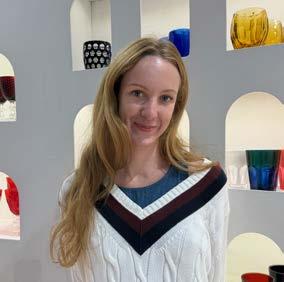



hand, many operators report uncertainty, a drop in consumer spending, and difficulties for traditional distribution in Italy and Europe. In this context, Maison&Objet aims to be both a catalyst for trends and new energy, capable of enhancing creativity and craftsmanship, and a concrete forum where companies can rethink strategies, assortments, and distribution channels.


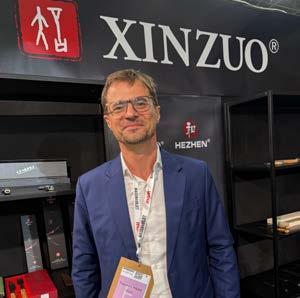
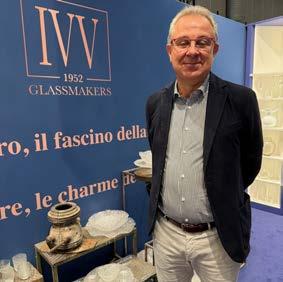
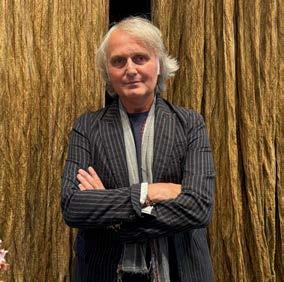
At Host Milano, Paderno celebrates 100 years: a century of Italian excellence in professional kitchens
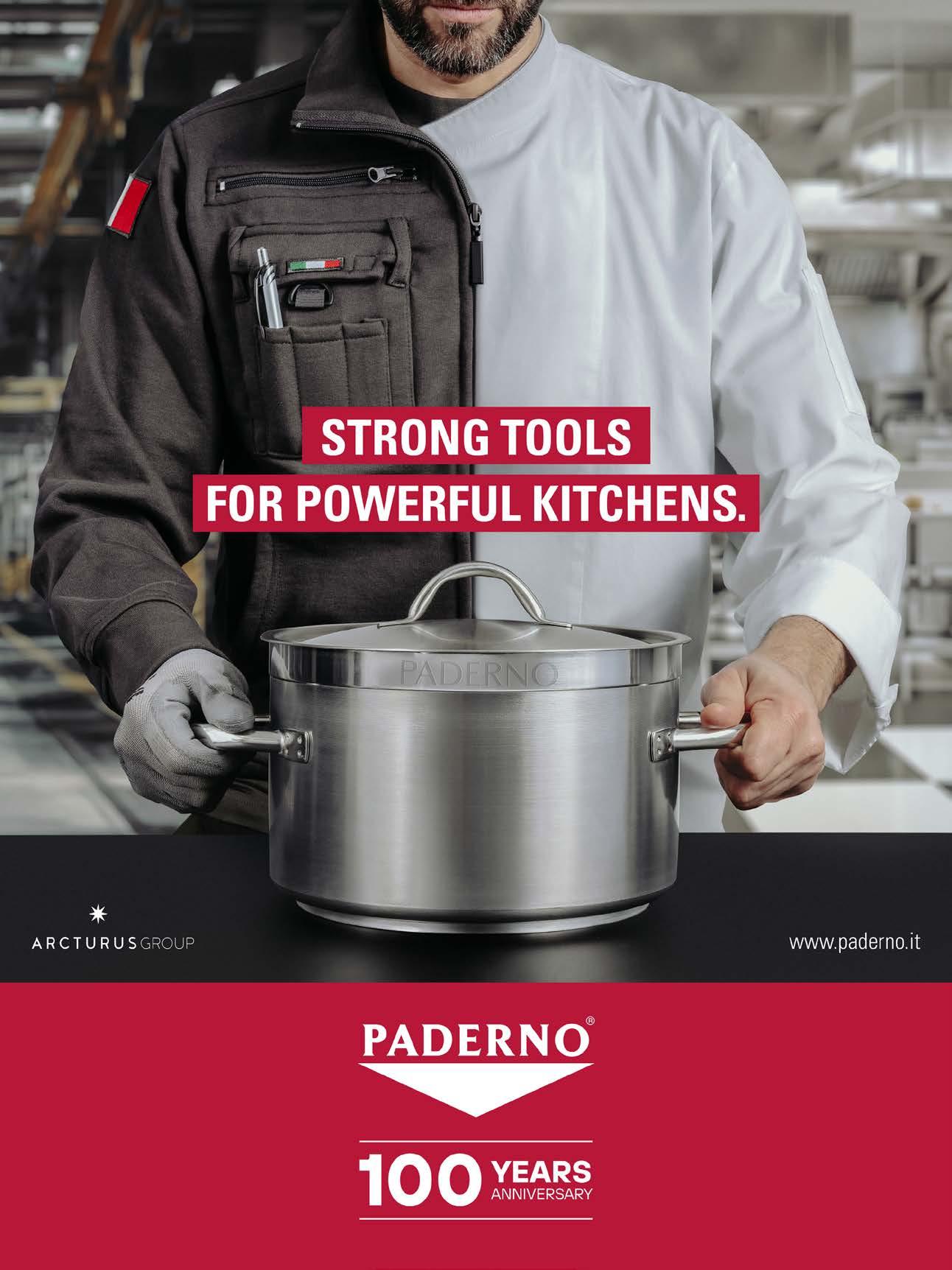
2025 marks a significant milestone for the Arcturus Group: the Paderno brand celebrates its centenary
The company has chosen to mark the occasion with an extensive communication campaign and a strong presence at Host Milano, the leading international trade show dedicated to the hospitality industry, scheduled from 17 to 21 October at Fieramilano Rho.
A campaign for the 100th anniversary
Following a rebranding journey launched last year, Paderno is reaffirming and celebrating its


core values in this milestone year. Passion, technical expertise, innovation and service are encapsulated in the new payoff “Strong tools for powerful kitchens,” which will accompany the brand throughout the celebrations and usher in a renewed visual identity.
The updated image of Paderno will be rolled out through a multichannel brand campaign, including a specially designed visual and a celebratory video featuring Michelin-starred chef Ugo Alciati – a long-time Paderno client – as its sole protagonist.
As Valentina Guatelli, Marketing Manager at Sambonet Paderno Industrie, explained, the
campaign concept aims to connect two seemingly distant worlds: manufacturing and gastronomy. “We wanted to celebrate the passion and drive for excellence that unite Paderno’s entire offering, from industrial production to everyday use in professional kitchens around the world.”
The role of Host Milano
Host is the pivotal moment in this journey. Paderno will showcase a redesigned stand and spearhead a broad communication campaign both inside and outside the trade fair venue: video installations, signage, guerrilla marketing across the exhibition area and a strong presence at Rho-Fiera metro station.
Exclusive events are planned for partners and clients, including an opening night and an entertainment session with world champion bartender Bruno Vanzan, who will create a signature cocktail in honour of Paderno.
Today, Paderno boasts a catalogue of over 10,000 items, ranging from professional cookware and cutlery to kitchen tools and food service equipment. The versatility of its range allows the brand to meet every need and cater to a wide, diverse audience.
2025 will also see the launch of a revamped website, designed to streamline access for both HoReCa professionals and end consumers, featuring a more intuitive and functional interface.
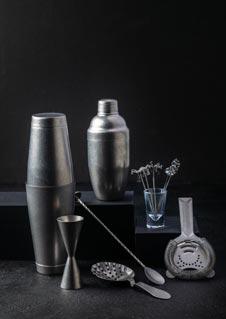

Mixology Vintage collection.
Being a partner to top-tier gastronomy worldwide also means staying connected to virtuous initiatives and the next generation of chefs. Since 2024, Paderno has supported the Slow Food Cooks’ Alliance and launched new projects that highlight the brand’s versatility and authenticity. Examples include a partnership with Roots in Modena – the first social restaurant created by the Association for the Integration of Women and founded by Caroline Caporossi and Jessica Rosval – where Paderno supports training, female entrepreneurship and the empowerment of migrant women. Another is the collaboration with ICIF, the first international Italian culinary school, which welcomes young chefs from around the globe to promote Italy’s culinary heritage and quality.
On this, Guatelli notes: “With such a wide and versatile product range, Paderno can be the ideal partner for many different realities, from Michelin-starred chefs to street food vendors, to initiatives that merge gastronomy with social impact.”
In 2024, Paderno – alongside Sambonet and Arthur Krupp – was added to the special register of Historic Brands of National Interest. Reserved for Italian companies with over 50 years of hi-
Ugo Alciati, Michelin-starred chef at Guidoristorante in Serralunga d’Alba (CN).
story, this recognition underscores the group’s brands as icons of Italian excellence and style around the world.
Alongside the centenary celebrations, Sambonet Paderno Industrie will also present its 13th Sustainability Report, covering 2024. The document reaffirms the company’s commitment to renewable energy, biodiversity, gender equality, and employee safety.
The production facility in Orfengo (Novara) already operates with 100% green energy, supported by a photovoltaic system of over 5,000 panels, covering about 40% of the company’s energy needs.

Valentina Guatelli, Marketing Manager
Sambonet Paderno Industrie S.p.A.
The 44th edition of the leading global trade fair for the hospitality and out-of-home sectors lands in Milan
Fiera Milano Rho hosts Host 2025, the world’s premier biennial event showcasing the latest trends revolutionising the global hospitality industry. From smart automation to AI-curated menus, and sustainability-driven choices and consumption, hospitality is undergoing an unprecedented transformation. With over 1,700 exhibitors from 54 countries and 44% of international participants, the event reaffirms its undisputed leadership in the sector.
Record participation and technological innovation
The event welcomes over 700 highly qualified hosted buyers from 75 countries, supported by ICE – the Italian Trade Agency. Visitors come mainly from the Americas (35%), the Middle East and Africa (28%), Europe (24%), and AsiaOceania (14%), representing distributors, food service operators, retailers, mass market players, and hospitality professionals. The exhibition showcases cutting-edge technologies combined with design and functionality to create hi-tech yet welcoming solutions, offering multisensory and immersive experiences. The event is organised into key supply chains: Professional Catering and Bakery-Pasta-Pizza; Coffee-Tea, Bar-Coffee Machines-Vending, Gelato-Pastry; Tableware-Technology-Contract Furnishings.

The revamped MIPPP – Milano Pane Pizza Pasta, in partnership with Consorzio SIPAN, gathers top Italian bakery equipment manufacturers. Bakery Square hosts the prestigious Panettone World Championship and the European Pizza Championship, reflecting growing consumer demand for products that blend craftsmanship and wellness. SIC – the International Coffee Show – covers the entire supply chain from green bean to cup, featuring the return of the World Barista Championship.
Exclusive events and global expansion
A packed programme includes show-cooking demos with Michelin-starred chefs, internatio-
nal competitions, educational sessions with experts, and the seventh edition of the Smart Label – Host Innovation Award, which has received over 950 submissions over the years. International expansion is embodied by Host Arabia, a new spin-off event taking place in Riyadh from 15–17 December 2025 alongside Saudi HORECA, creating a key networking hub in the heart of the Middle East. Host 2025 confirms itself as the global “place to be” for innovation in professional hospitality.
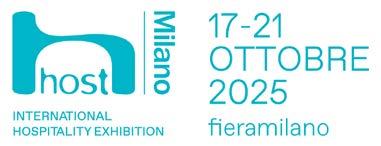
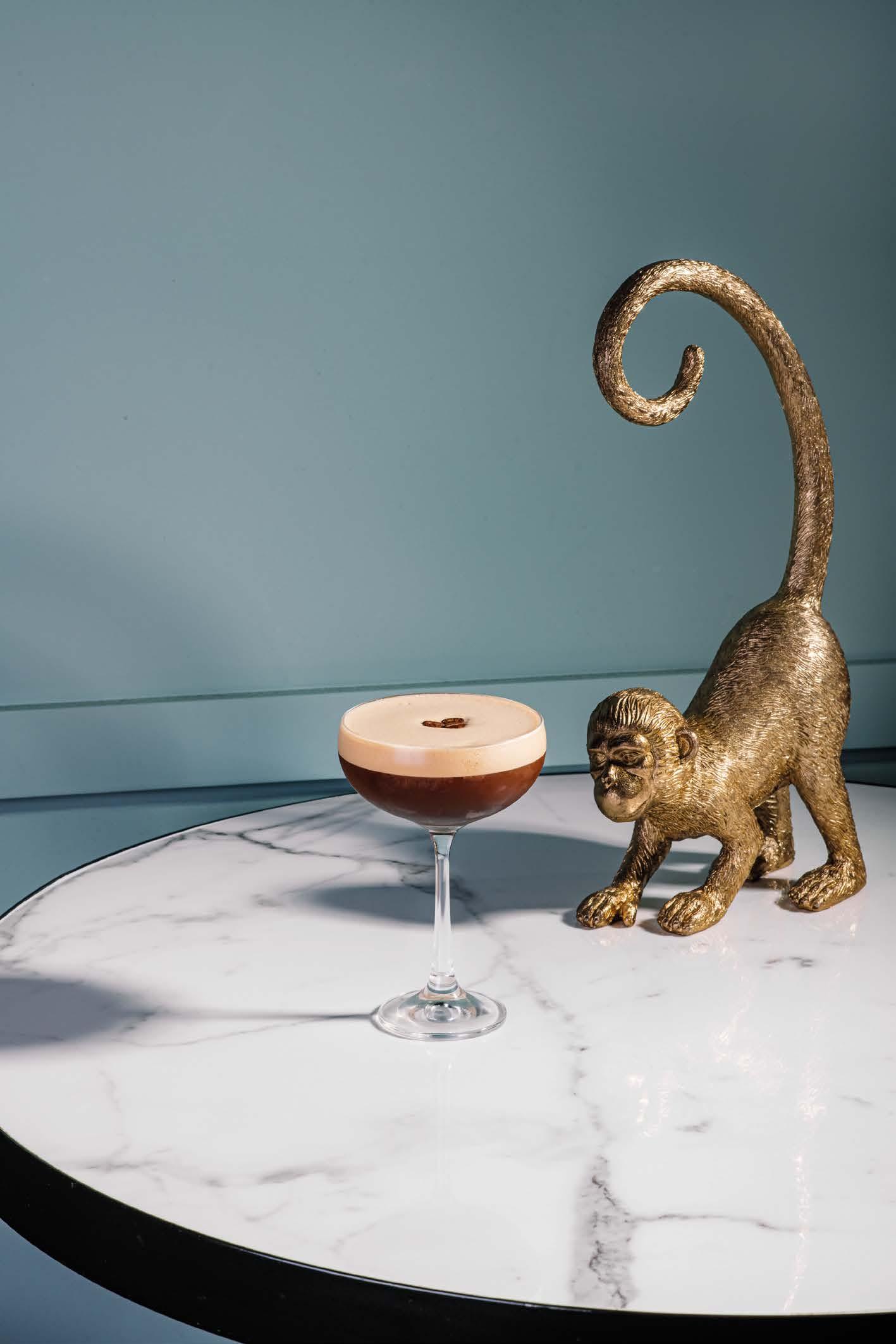
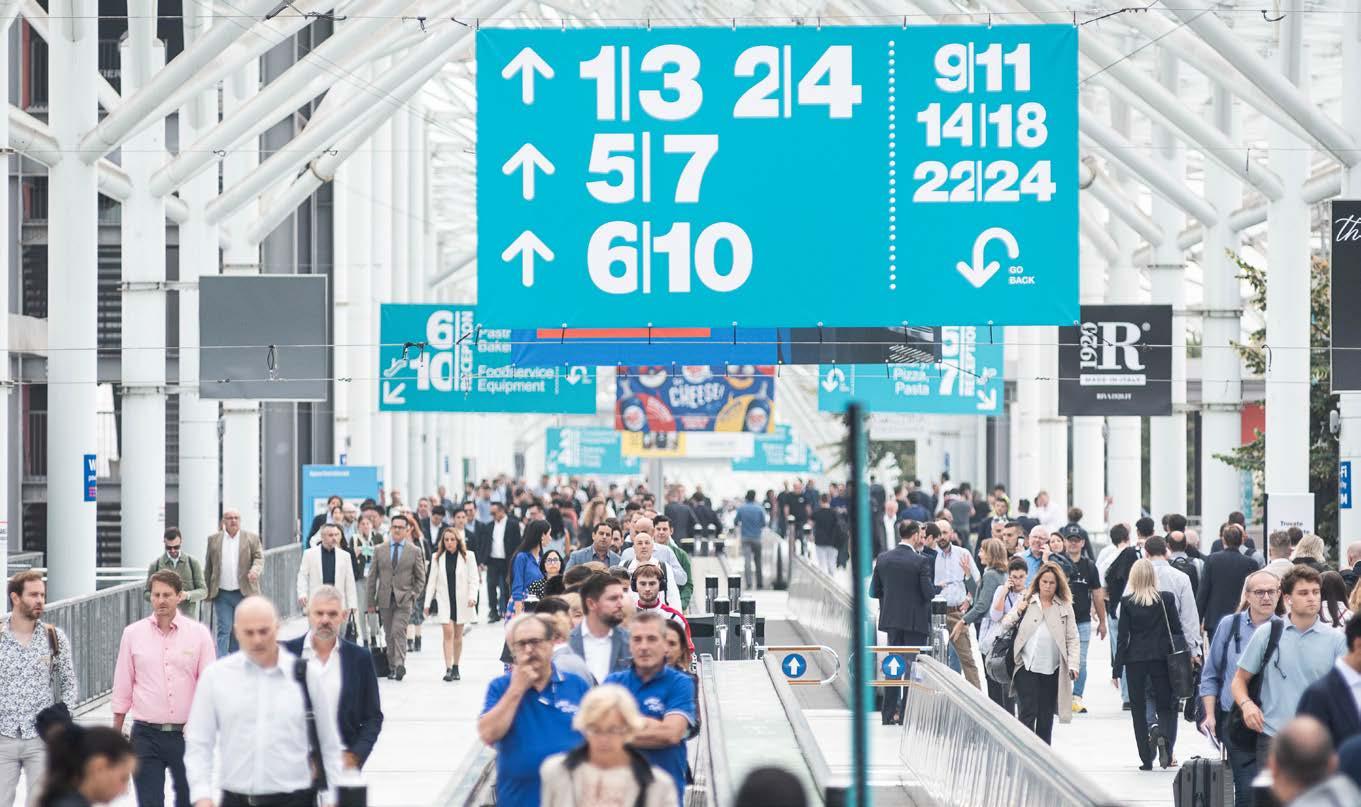
by Giulia Arrigoni
During Host 2025—the leading hospitality industry event organised by Fiera Milano and scheduled for 17–21 October—Smart Label –Host Innovation Award returns. This prestigious recognition, created to celebrate innovation in the hospitality sector, has grown steadily over the years. Hundreds of applications have been received, highlighting the award’s relevance. We spoke with Matteo Ingaramo, Associate Professor at Politecnico di Milano and chair of the jury
Professor, what is the aim of the Smart Label?
The goal is not to pick a single winner, but to highlight a wide array of interesting proposals. Some are recognised for their technological innovation, others for environmental impact or usability. The jury is diverse, allowing projects to be evaluated from multiple perspectives. Participation is open to anyone within Host’s product categories: from tableware to machinery and furniture. The Politecnico di Milano ensures the independence of the selection process, free from commercial influence. This has helped encourage startups and small businesses to apply.
What exactly do we mean by innovation?
Rather than “innovation label”, we prefer “smart label”: the key is the intelligence in how technologies are applied. A groundbreaking patent isn’t always necessary—innovation can come from recombining existing solutions or adapting them to new contexts. It’s about “knowledge ecology”: not always racing to create something new, but optimising what we already have. This design-driven approach merges diverse expertise to deliver real benefits to end users and industry professionals alike.
What trends have emerged in recent editions?
Alongside traditional technological improvements—like lowering a machine’s energy consumption—we're seeing innovations that respond to cultural and social changes. Dietary habits are shifting, and demand for personalised services is rising. As a result, companies are developing adaptable solutions and digital systems for managing orders, maintenance, and supplies. Artificial intelligence plays a growing role—not only in how machines function but in broader aspects like distribution and staff training. The goal is to reduce waste and error while improving efficiency and service quality.
Can you share some specific examples?
A key example is the shift from traditional to induction boilers in coffee machines—a bold move that eventually transformed the market by cutting wait times and energy use. Other innovations focus on material durability, like advanced ceramic tableware with longer lifespans, or refrigerated counters made from natural materials instead of synthetic foams. We’ve also seen simpler smart solutions, such as start-stop systems for fryers that optimise oil and energy use.
Which countries are submitting the most innovative entries?
Most entries still come from Europe, especially Italy, which has a strong tradition in manufacturing professional catering equipment. However, we’re seeing some bold, original ideas from South America and Asia as well.

Who makes up the jury?
The jury is international and includes experts from various fields—engineering, research, hospitality, service, and industry journalism. Every year we receive hundreds of entries, confirming Smart Label’s role as a key observatory of industry trends.
To summarise, what are the main emerging themes?
Three main trends stand out:
- Digitalisation and AI, not just in machines but throughout the service chain.
- Adaptation of existing products to meet evolving consumer needs and tourism trends.
- Materials and manufacturing quality, focusing on durability and industrial research.
These paths may differ, but all aim to make hospitality products and services smarter.

“Smart Label – Host Innovation Award is a highly valuable recognition, as it rewards innovation, which has always been the beating heart of Host Milano,” says Francesca Cavallo, Head of Hospitality Exhibitions at Fiera Milano. “Intelligent and sustainable solutions—both environmentally and socially—are now key factors for a company’s competitiveness. The Ho.Re.Ca. sector, a true laboratory of trends, finds in Host the ideal platform to showcase and share these excellences on an international level.”
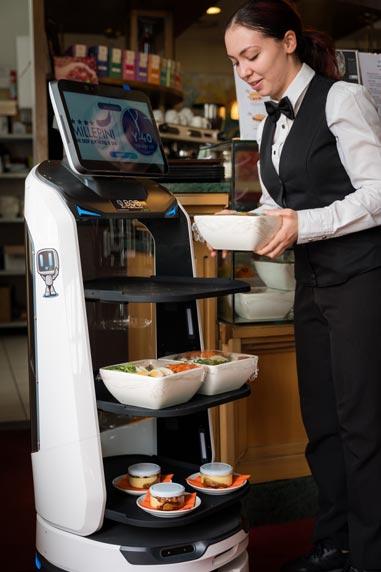
by Patrizia Pagani
The high quality of environments and excellence in service are no longer enough. Today, the hotel establishments most appreciated by guests stand out thanks to choices of artificial intelligence–based automation and/or the growing sustainability of materials, energy sources, beverages, and food
Hotels change because consumer needs change. Today, hospitality is a matter of “customer experience”: consider that more than two thirds of millennials would choose to spend money on an experience rather than purchasing a desirable good. For hotels, therefore, the focus shifts toward offering unique initiatives and special events, but also peace and relaxation away from everyday stress, all
while seeking appropriate personalization so that guests feel truly appreciated. Not only that: today’s prevailing lifestyles reflect a growing awareness of climate change and the role human behavior can play, which fuels increased demand for sustainable travel, eco hotels, km 0 foods, and local rather than international tourism.
Another driving trend, tied to the demand for “modernity,” is the introduction into hotels of state of the art technological solutions: from algorithms for room assignment to multilingual avatars, from automatic check in systems to robot waiters. The global AI in Hospitality market is forecast to grow by 1,100% between 2024 and 2033 (source: InsightAce Analytic). Thus, artificial intelligence is also revolutionizing the world of Hôtellerie, offering innovative services to guests and ever more efficient support to industry operators. Technological upgrades and automation allow mitigation of a recurring issue for Italian hoteliers: the scarcity of staff and skills. Adopting AI based systems and assistants enables managing the chronic shortage of personnel, attracting new employees, and improving guest satisfaction.
And always in order to respond effectively to new guest needs, excellent solutions today include chatbots — available 24/7, they can be used to increase direct bookings and provide automated support throughout the booking process — and hotel apps, improving guest communication, offering contactless services, and much more. Another trend aimed at reducing guest contact with surfaces is the adoption of voice control solutions: AI assistants like “Alexa for Hospitality” are now present in several hotels. Finally, we must not forget virtual reality, which hotels can successfully use to offer targeted tours, allowing guests to experience rooms and spaces without leaving home.
Thermal tradition enriched by tech support
An interesting case of successful mix between sustainability, wellness, and technology is Hotel Terme Millepini, a 4-star property established in 1978 and ever-evolving since. Situated in Montegrotto Terme, at the foot of the Euganean Hills, the hotel has been able to draw on the

thermal tradition of its territory — known since Roman times — not just the precious resource of saline bromoiodic waters and muds, but a slow, relaxing lifestyle in contact with nature, despite being just a few kilometers from the city center and well connected to the main art cities of Veneto.
Called to balance tradition with innovation, for example on the technological side, “Just think
that, within the spa facility, already in the 1990s we equipped the mud therapy changing rooms with a mud distribution system we designed and built ourselves,” says Emanuele Boaretto, owner of Hotel Terme Millepini. “This was intended to maintain consistent product/service quality so that guests could receive the best from their treatment, and to alleviate the workload of staff and speed up repetitive tasks. In 2014, I

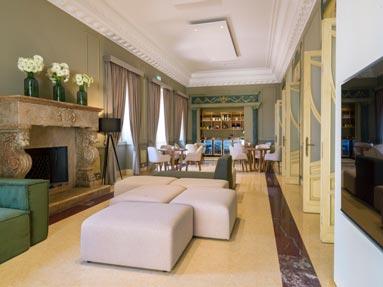
also conceived and designed the world’s deepest thermal water pool, Y 40 The Deep Joy, a unique place to make further use of thermal water, turning it into an ideal environment for lessons, courses, apnea and scuba diving yearround thanks to its constant 33–34 °C temperature: today it hosts multiple activities, including scientific research, training and rescue exercises, photo/video production for marketing and cinema. In 2026 we will open a second area, Phi 12, for all guests to enjoy diving, snorkeling, or simple guided visits.”
In recent times, for hospitality operations more open to innovation, technology represents an effective solution to compensate for growing staff shortages. In times when human resources are harder to find, hi-tech and AI systems can functionally support staff. “In this sense, in our restaurant area the latest adoption is Bob, a robot waiter that transports food within the facility,” continues Boaretto. “Following an exact mapping of the ground floor, this friendly automated cart can travel from pantry to bar to dining room as directed by the kitchen team, helping human servers carry dishes and drinks without leaving the dining area, thereby ensuring greater attention to guests. We are already exploring additional technologies and solutions that in some
countries — China, for example — are already in advanced use.”
How do guests and staff respond to these hi-tech innovations? “Our choices always initially draw curiosity and attention, then are generally appreciated by both guests and employees,” Boaretto notes. “In our facility, technology does not replace staff — especially in reception, where human interaction remains essential — but provides valuable help for longer, more physically demanding and repetitive tasks, freeing up precious time to devote to guest care.”
The ONE brand, affiliated with UNA HOTELS, positions itself in the “urban wellness” segment, a revolutionary wellbeing concept open to the city. It stems from a forward-looking strategy: converting areas traditionally dedicated to MICE (Meetings, Incentives, Conferences, Exhibitions) into extraordinary and engaging urban oases of “wellbeing.” Designed for the needs of a new generation of global travelers, its main advantage is offering a new way to live hotel spaces—going beyond mere lodging to become immersive experience and inspiration. “In rethinking the public spaces and MICE are-

as in an experiential logic, at ONE Siracusa—a 44-room hotel format—we allocated more than 800 m2 over two levels to wellness, including an urban spa, fully equipped gym, and a premium beauty center,” affirms Annibale Linguanti, CEO of UNA Hotels ONE. “We conceive wellness as a fluid, accessible dimension that invites connection with oneself and with others, creating virtuous connections between hotel guests and local visitors. To foster a relaxed, informal atmosphere, bathrobes may be worn in common spaces and all food & beverage points


operate as honesty bars, promoting trust and guest autonomy.”
Innovation is a fundamental pillar of the ONE brand: technology becomes a tool to enhance the customer experience, offering service as an expression of modernity and freedom. “We want guests to feel at home, but with all the comforts and fluidity of a next-generation hotel, shaped like a lifestyle experience in which hitech is an integrated and coherent element with the urban wellness identity and a strategic asset to optimize operational processes, freeing staff from standard, repetitive tasks,” explains Linguanti. “Accordingly, through a strategic partnership with Keenon Robotics, in 2022 we were the first hotel in Italy to introduce service robotics in rooms. Robots perform deliveries and routine service discreetly and quickly. We also adopted surface robots in dining areas to support our front-of-house staff. Every aspect has been designed for autonomous use: guests can serve themselves at refreshment points, prepare drinks via automatic cocktail machines, and thanks to integrated digital systems, automatically charge consumption to their accounts.” These solutions have been adopted with a precise consideration: robotic technology

and AI systems must not replace human contact—but rather support and make it more efficient.
Feedback has been very positive. “First and foremost,” Linguanti concludes, “the technological factor is already a selection criterion: contemporary travelers choose us from the research phase because they lean toward hotels with in-

novative offerings. Once inside, technology becomes a source of delight and sharing. A striking example is interaction with our robot Leonard, which can deliver breakfast, dinner, or any item directly to the room. For our guests, this is not only efficient service, but also a playful feature worth sharing on social media.” While awaiting the final project, currently under evaluation—the introduction of a robotic massage bed in the spa—the hotel promises to further elevate its wellness experience for guests.
Sustainability applied is always a plus
Socio-environmental responsibility has become an increasingly popular theme in hotel management, especially since guests in recent years have shown growing attention to sustainability, favoring properties aligned with their personal values.
Take, for example, Castelfalfi in Montaione (FI)—a 5-star hotel plus exclusive villas set in a living village in the heart of the Tuscan countryside: here, history, luxury, and nature merge harmoniously, promising rejuvenating wellness and slow living moments. Among the 1,100 hectares of the estate, every intervention and new project is carried out with utmost respect for the existing ecosystem, letting nature guide action rather than the reverse. Sustainable initiatives include self-sufficiency in drinking water
and irrigation, a biomass heating/cooling system, low-emission LED lighting, zero-km ingredients in restaurants, certified organic farming, in-house beekeeping to support biodiversity, olive groves farmed to minimize erosion and preserve soil fertility, pesticide-free winemaking that encourages soil regeneration. But it is not merely the location in a naturally “green” territory like Tuscany that matters. Even in a bustling city like Milan, institutional strategy can embed sustainability among core values. Consider the Excelsior Hotel Gallia—an icon of Milanese hospitality, adjacent to Central Station and steps from the Porta Nuova district. The property merges the historic charm of the 1932 original building with a contemporary wing designed by Marco Piva Studio, offering 235 rooms, over 50 suites, a 1,000 m2 Shiseido spa, gourmet dining (Terrazza Gallia, Gallia Lounge & Bar) and advanced congress facilities. “Our competitive advantages certainly include service excellence, attention to detail, strategic location, and a strong connection with Milanese design, history, and Italian craftsmanship,” says Gianrico Esposito, the General Manager. “Sustainability plays a leading role across three main axes: energy efficiency, environmental impact reduction, and valorization of


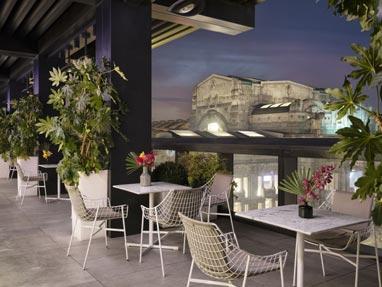
local resources. For more than a year we’ve held the prestigious Green Key certification for eco friendly practices—and since early 2025, we’ve added the Verified Responsible Hospitality badge awarded by Forbes Travel Guide.” Among recent initiatives are amenities made with recycled materials and biodegradable packaging, digital solutions aimed at reducing plastic and paper use, and promoting a circular economy.
“Our gastronomic offering also reflects this approach,” adds Esposito. “Terrazza Gallia prioritizes local and seasonal ingredients, emphasizing waste reduction and creative reuse of food scraps. We’ve introduced on site hives to support urban biodiversity. Once harvesting is established, we’ll produce zero km honey to be used within the hotel, reinforcing the link bet-

ween environmental responsibility and local territory. In terms of cultural and artistic collaboration, we’re actively seeking projects on sustainability, which will soon produce visible results.” The hotel has also adopted more efficient resource management systems, staff training programs, and guest communication measures to promote sustainable behaviors—all choices stemming from the desire to deliver a conscious luxury experience that meets the expectations of eco-aware clientele without sacrificing excellence. “Guests respond positively to our green initiatives,” Esposito emphasizes. “Feedback often praises our attention to the environment without compromising comfort and quality. Many clients now choose us precisely because of our ecological commitment, confirming that sustainability is becoming a shared, demanded value in high-level hospitality.” Among upcoming enhancements is the installation of electric vehicle charging stations, an important step to encourage low-impact mobility. Thus, continuing step by step, the property adds integrated green solutions to drive positive change for the planet.
The Hôtellerie sector is proving to be among the most receptive to AI adoption, as its longstanding priority has always been to offer continuous, personalized, and excellent service to its guests.
“Thanks to the introduction of technologies like Algho, the hotel experience is enriched with new levels of hyper-personalization and unprecedented attention to digital and physical touchpoints,” notes Ernesto Di Iorio, CEO of QuestIT by Vection Technologies. “The most significant impact is found in the phygital dimension: AI brings the speed and responsiveness typical of online environments into offline spaces as well, transforming every interaction—from booking to the stay itself—into a smooth, consistent, and uninterrupted experience. At the same time, organizations gain a dual benefit: on the one hand, a reduction in human error and operational costs thanks to intelligent automation; on the other, increased staff productivity, allowing employees to focus on higher-value tasks. No less important is AI’s contribution to scalability and safety management: advanced systems can monitor environments, mitigate operational risks, and ensure high standards of control and reliability, thereby strengthening guest trust.”

QuestIT has also developed Regina, a true intelligent avatar virtual concierge designed to transform the guest experience within hospitality venues. “Its strength lies in its ability to combine personalized, multilingual reception with a natural interaction fully aligned with the brand’s identity,” Di Iorio explains. “It can be integrated into multiple touchpoints, from the website to WhatsApp, interactive kiosks, and VoIP channels, enabling guests to receive ongoing assistance, finalize bookings, make payments, or purchase additional services without waiting. Another key feature is its seamless integration with the hotel’s systems: in addition to supporting internal services, Regina also acts as an interactive tour guide, able to suggest personalized itineraries and provide directions to museums, events, and attractions—thus enhancing the value of the surrounding area.”
Among the venues that have chosen to innovate their guest services using the Algho solution is Hotel Rutiliano in Pienza, with implementation by partner Ready Go. Here, “Giulia” was created—an AI assistant designed to accompany guests through every stage of their stay, providing immediate and accurate answers to frequently asked questions, from practical information about the hotel to details on additional services such as the spa, restaurant, and in-house activities, as well as useful tips about the city of Pienza. Thanks to this integration, Hotel Rutiliano can offer a service that is always available, personalized, and interactive— enhancing guest satisfaction and reinforcing the hotel's image as a forward-looking, comfort-oriented establishment.

Looking ahead, the technological evolution of the hospitality industry in Italy is progressing along lines that go beyond AI models alone, also involving the infrastructure that enables real-time management of complex, data-intensive workloads. “This transformation allows hotels to provide a smoother, more personalized experience for customers while improving the efficiency of internal processes,” concludes Di Iorio. “The integration of totems and AI, for example, is creating connected ecosystems capable of delivering ever-higher levels of comfort and sustainability. The adoption of solutions such as avatars or digital twins also ensures a fully inclusive service—for instance, by responding to deaf users in sign language. In this light, artificial intelligence is no longer just a support tool but a true strategic partner for hotels, capable of transforming the guest experience and the very way hospitality and inclusivity are managed.”
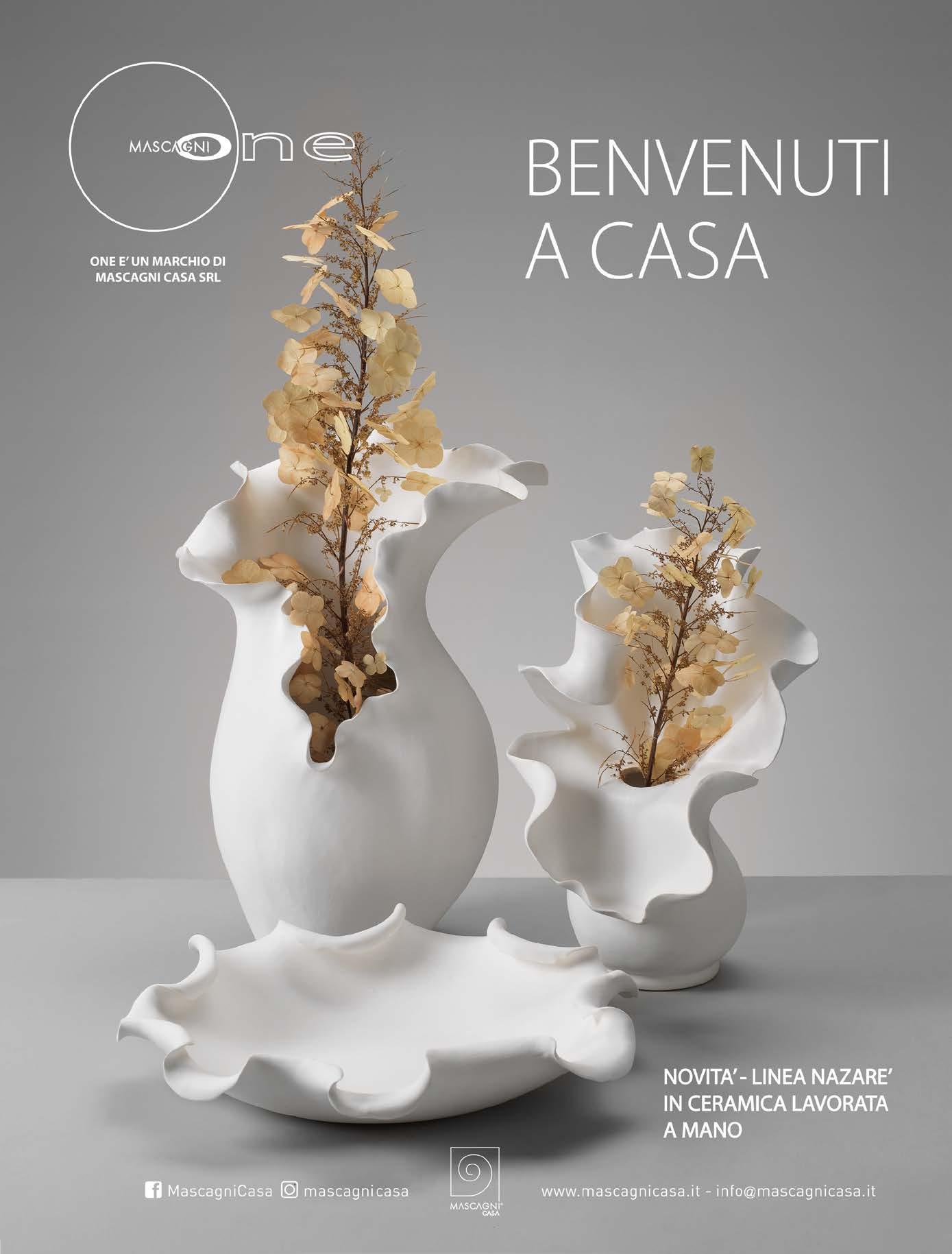
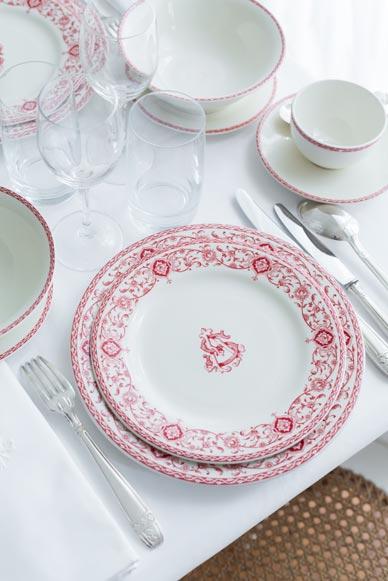
Faïencerie de Gien
Founded in 1821 in the Loire Valley, Gien is a symbol of French decorative arts. For two centuries, its refined and elegant faience collections have celebrated the French art de vivre. Today, the maison collaborates with the luxury hospitality sector, creating bespoke tableware for prestigious venues such as Le Meurice and Hotel Alfred Sommier.
At Host Milano 2025, Francéclat brings together four French tableware maisons for the first time in a collective pavilion—an initiative that highlights savoir-faire, innovation, and creativity, while strengthening the international presence of French tradition in hospitality and food service

Around the world, French tableware embodies a unique art of living, capable of transforming the dining experience into a moment of elegance and conviviality. At Host Milano 2025, the leading international trade fair for hospitality and food service, this excellence will debut in a new format: four French maisons will share a collective pavilion promoted by Francéclat.
A collective approach to excellence Francéclat, the organization supporting French companies in watchmaking, jewelry, and tableware, will accompany four standout brands— each blending tradition and innovation—to Milan: cutlery specialists Atelier Perceval and Claude Dozorme, the historic Faïencerie de Gien, and Sarah-Linda, a young brand specializing in Limoges porcelain. Their collections, showcased at Pavilion 9 – Stand H33, will offer a journey through artisanal savoir-faire and contemporary aesthetic research.

For over thirty years, Atelier Perceval has been crafting high-end knives in Thiers, the historic capital of French cutlery. Each piece, entirely handmade, combines minimalism, noble materials, and customization. The iconic 9.47 model, developed with Michelin-starred chef Yves Charles, is now a favorite in kitchens from Tokyo to New York to Paris.

Claude Dozorme
Founded in 1902, the company is synonymous with innovation and creativity. Its knives, entirely made in France, reinterpret the most iconic regional models— from the Thiers® to the Laguiole—while introducing bold and original designs. Dozorme creations grace the tables of Michelin-starred restaurants such as JeanGeorges in New York and Neige d’Été in Paris.
Sensual and poetic, Sarah-Linda’s porcelain is crafted in Limoges and celebrates nature, the seasons, and the beauty of everyday life. Each creation is an invitation to experience the table as a sensory journey, balancing refinement and emotion. Her collaborations include world-renowned restaurants and hotels such as Mirazur, The French Laundry, The Ritz, and Mandarin Oriental.


A shared mission: promoting French savoirfaire
This collective participation at Host 2025 aims to strengthen the international presence of French tableware and its role in gastronomy and hospitality. Other French brands presenting their collections at the fair include Groupe Arc, Bernardaud, Déglon, Degrenne, J.L. Coquet, Jean Dubost, La Rochère, Opinel, Orfèvrerie Christofle, Revol, and Tarrerias Bonjean. These brands span from century-old heritage to contemporary design, yet all uphold a shared legacy of craftsmanship.
Francéclat thus reaffirms its strategic role: enhancing savoir-faire, fostering innovation, and facilitating professional connections to increase the sector’s international visibility.





To stay up to date and discover over 100 brands: franceclat-international.com
LinkedIn: Francéclat International
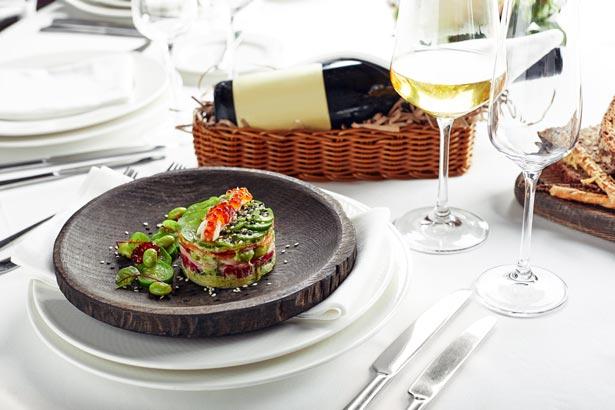
by Fabio Destefani
Paying attention to every detail of the table is essential to provide customers with a truly unique experience. In this article, we explain why, while also outlining the latest trends in table setting
Attention to detail makes the difference What prompts us to choose one restaurant over another? The most immediate and obvious answer is the quality of the food. Yet, while food certainly plays a key role in the decision, there are other important factors that influence our choices. These include the care put into the preparation of the dishes, the location, well-curated interior décor, the arrangement of the tables, the alignment of the chairs, and—last but not least—a well-thoughtout table setting.
Table setting is a step that should never be overlooked, regardless of the restaurant’s furnishing style. To create a flawless table, every element must be meticulously coordinated and harmonious, from the choice of the right napkin and cutlery to the centerpiece, always matching the
right color palette. Historically, table setting was less formal and standardized than it is today. Over time, particularly under the influence of French culture and the highly organized kitchen brigades established by chefs like Georges Auguste Escoffier, table preparation has become more methodical and refined. The renowned French chef introduced a hierarchical and structured system not only in the kitchen but also in dining service, streamlining the process and enhancing efficiency and elegance.
Table setting varies depending on the type of service (à la carte, banquets, buffets) and the menu's specific requirements. In formal settings, it involves matching tablecloths and napkins, dishes arranged in the order of the courses, systematically placed cutlery, and glasses positioned at the upper right of the place setting, following a hierarchy based on the type of drink. This concept, fundamental to the art of hosting, has evolved significantly over time to become a key element in delivering a high-level dining experience. However, these base rules must be adapted to various factors, from the menu to the season, or the event being celebrated (Valentine’s Day, a wedding, Christmas, etc.). In cases where the menu has been pre-arranged, the table setting is adapted according to the selected dishes and wines.
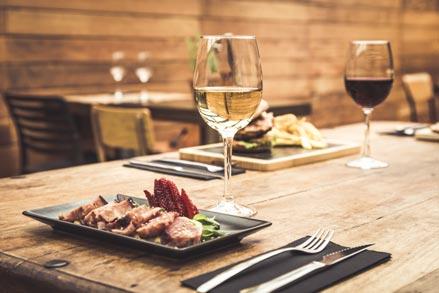
A different mise en place for every restaurant type
Having defined the meaning and purpose of table setting, it's important to stress that it changes depending on the restaurant type and the culinary offering. Every detail expresses the restaurant’s identity, its cuisine, and the type of servi-

ce it aims to provide. In fine dining establishments, table setting is highly formal and attended to in every detail. Linen tablecloths, matching napkins, silverware, crystal glasses, and finely decorated plates are typically used. Each element is precisely placed to create a harmonious aesthetic and functional layout. The cutlery arrangement follows a strict logic: forks on the left, knives and spoons on the right, with dessert utensils above the plate. Glasses are arranged in order of use, from water glasses to wine glasses. These strict details are designed not only to enhance the dining experience but also to convey a sense of luxury and sophistication. The situation is different in bistros or trattorias, where the table setting is much simpler and more informal but still welcoming and well-kept.
Tablecloths may be made of cotton or even replaced by individual placemats. Cutlery is placed traditionally but without the opulence of silverware. Fewer glasses are used—typically one for water and one for wine. The goal is to maintain an atmosphere that is both cozy and informal, fostering a convivial and relaxed mood. In ethnic restaurants, the table setting is closely linked to the style and atmosphere of the specific culture. For example, in a Mexican restau-
rant, colorful tablecloths and handcrafted ceramic plates may be part of the setting; in a Japanese restaurant, bamboo mats, chopsticks, and small soy sauce dishes may be used—all enhancing the overall dining experience.
Modern minimalist restaurants, on the other hand, often feature table settings with clean lines and essential design. These places may use individual placemats or no tablecloth at all, with natural materials such as wood or stone. The cutlery and glasses tend to be design-driven, often made from stainless steel and clear glass. This clean and formal look highlights the quality of the food and the chef’s culinary skill.
Creative table settings
While respecting the fundamental rules mentio-
ned above—and always keeping in mind that a table must be not only beautiful but also functional for both customers and service staff— every restaurateur should feel free to interpret the table creatively. It’s like staging a theatrical performance, where success depends on the interaction between all the elements, from the actors to the set design.
In a creative table setting, colors play a major role, with the use of unexpected shades such as purple, red (used sparingly to avoid a Christmasy feel), yellow, denim blue, and powder blue. Creativity is also expressed in the choice of cutlery, with vintage or revival-style pieces made from natural materials like wood, and in the preference for plates and glasses featuring different types of transparency—laminated, frosted, lace-
patterned, polka-dotted, pastel tones, and geometric designs.
Tablecloth or no tablecloth?
As we know, setting a table traditionally begins with laying a tablecloth. However, two schools of thought exist. The more classic and traditional one calls for a tablecloth (in formal settings often with an underlay to muffle the sound of dishes), while the more modern approach often omits it, sometimes replacing it with individual placemats.
Setting the table without a tablecloth is very trendy, but it requires a few precautions. Serving directly on the table surface, with only a charger plate, requires careful consideration of how to reduce the noise of dishes.


A third option, aiming to strike a balance between tradition and innovation, involves using paper tablecloths and napkins. While some may see this as a “cheap” solution, it does have certain advantages—like frequently refreshing the look of the table by changing the color or pattern of the napkins or placemats. This allows for seasonal or themed updates without structural changes.
Disposable paper, especially in restaurants and cafés, also ensures a high level of hygiene by minimizing contamination risks.
Then there’s the sustainability aspect—especially when using paper products made from recycled or eco-friendly materials.
For those who still view paper as a less refined choice, paper advocates highlight the material’s


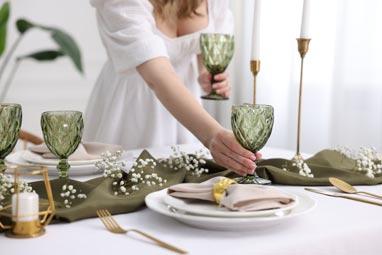
evolution in recent years. For tablecloths, for instance, there’s “dry paper,” a robust and versatile material treated to closely resemble fabric. For napkins, “airlaid” or “point-to-point” versions stand out for their absorbency, strength, and elegant appearance. These types of napkins are produced using a special technology that gives them a fabric-like feel, offering a stylish touch.
They can also be folded creatively, offering endless decorative possibilities. Thanks to a wide variety of colors and designs, they can be tailored to suit any theme or season.
Table setting is constantly evolving in line with new culinary trends and customers’ desire for fresh experiences. Emerging trends aim to create immersive dining experiences through innovative use of materials, design, and presentation. One of the most prominent trends in modern table setting is minimalism, characterized by a few, high-quality elements.
For example: undecorated white porcelain plates, stainless steel cutlery with clean lines, and clear crystal glasses. Minimalism enhances the presentation of the food while conveying elegance and sophistication.
By avoiding visual clutter, the minimalist approach invites diners not to fear empty spaces on the table. From “less is more” to mixing different styles. This approach combines traditional elements with modern forms—pairing ceramics with glass or metal for contrast and visual interest. The fusion of styles extends to decorative elements as well: for instance, Japanese-inspired centerpieces paired with European-designed napkins.
Another rising trend attracting a wide audience is sustainability. More and more restaurants are adopting eco-friendly practices in their table settings—using recyclable and biodegradable materials like bamboo and reclaimed wood, along with biodegradable dishes and cutlery. Other options include organic linen napkins and placemats, handmade ceramic plates, and wooden or bamboo cutlery. This approach not only reduces environmental impact but also lends a unique sense of authenticity and natural appeal to the table—resonating with today’s increasingly eco-conscious clientele. The integration of

natural elements into table settings is also growing. Raw wood, stones, leaves, and fresh flowers add an organic and relaxing touch.
Slate plates, wooden chargers, and centerpieces
made with aromatic plants or seasonal flowers are key components in creating a table that is not only visually attractive but also genuinely green.
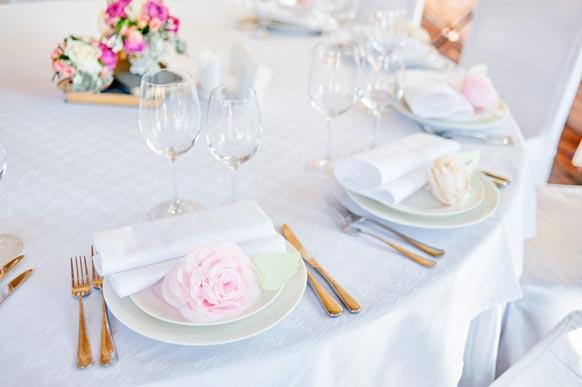


by Francesca Guerini Rocco

For restaurants, bars, and hotels seeking a table setting that stands out with personality and contemporary character, Easy Life presents Organica: conceptual, linear shapes that enhance every gourmet dish, transforming the table into a memorable experience. The matte olive green exterior contrasts with the glossy light green interior, creating subtle color plays with a striking effect.
Natural accents, warm palettes, and modular accessories. The new table setting dedicated to the Horeca world tells a collective story of warm, simple, yet refined conviviality. At the table, it's the personalized details that speak, the highly decorative objects, and the few classic pieces with a contemporary allure—all coming together to elevate the gastronomic experience to its fullest

Available in white, grey, or metallic-effect black, Frisbee by Brandani is a wireless table lamp featuring a USB cable and up to 10 hours of battery life. It is equipped with a touch system for switching on and off, and allows you to adjust the light—warm, cool, or natural—with different intensity levels.
Gemme by IVV is a white, portable, and rechargeable table lamp with a detachable, adjustable lampshade featuring a transparent pleated veil that diffuses light with elegance and delicacy. With two different height options, it naturally adapts to a variety of settings—from a stylishly set dining table to a bar counter, or the most intimate and welcoming corners of a lounge.

A cutlery collection where the elegance of classic design meets the sophistication of gold finishes. A symbol of Made in Italy quality and style, the Arianna Oro line is available in six different colorways with a PVD Gold finish.
The result of over sixty years of technical expertise and meticulous design, Rivadossi Sandro & C. brings to the table an excellence recognized in international markets.
For 2026, Brandani is dedicating an entire catalogue to the hospitality sector, featuring a wide range of tableware including plates, cutlery, glasses, cups, and various accessories. Among the new offerings is the Bolle stoneware set, available in white or black: dishwasher-safe, it features rounded, solid rims on the dinner plates and dotted edges that define the entire collection.
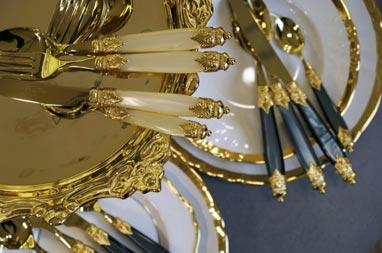

35 colours, 13 shapes and timeless elegance. The renowned Memento series by Serafini Zani, long known for its bold and creative use of colour, expands with the addition of new wine glasses. Eight shades are available— red, blue, mandarin, turquoise, black, lime, white and yellow—each adding a subtle yet striking brushstroke of colour to the stem, offering the perfect touch of style.
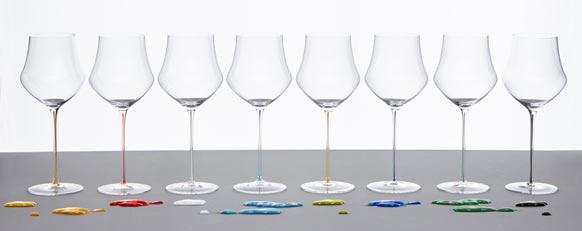


Introducing L’Arte della Materia, the new collection by SchönhuberFranchi, where deep black display stands meet the tactile essence of wood in an elegant, immersive dialogue. Bold lines and matte surfaces define a clean, contemporary structure, while the wooden tops add warmth and authentic texture. A buffet that becomes a sensory experience: each dish is presented like a small stage, narrating balance, substance, and beauty.
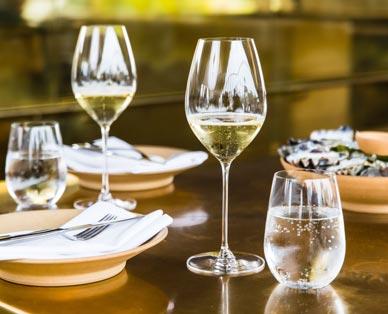
The special technology developed for Riedel Veritas is the result of generations of experience and oenological expertise: this collection of classic crystal glasses is perfectly balanced in weight and allows for the optimal tasting of any wine.
Inspired by Polynesian landscapes and atmospheres, the style is unmistakably Buccellati. The Tahiti decanter is a masterpiece of fine silver craftsmanship, reinterpreting ancient carafes with a contemporary and unexpected twist: a bamboo-effect handle. Designed for the most exclusive hospitality settings.

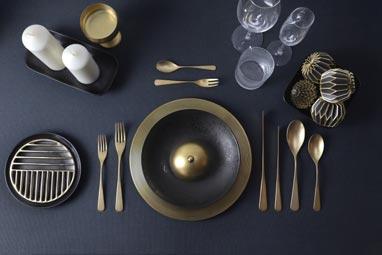
Fluid, soft, elongated lines: this is how Pinti reinterprets the new mise en place, with the elegant Audrey Velvet Honey cutlery set (design by Marcello Ziliani). The special finish, achieved through a double sandblasting process, creates a delicately textured effect and is available in various metal-inspired shades. Brand new is the Audrey Champagne version, inspired by the soft hue of the wine of the same name.
New cobalt colorway for the Arc Contrast line by LSA, an extension of the award-winning ARC collection. The profiles are gently tapered, the shape ergonomically designed to fit the hand, and the tactile translucent and matte finishes create a play of contrasting light. Perfectly matched with the Paddle collection in hand-finished FSC-certified ash wood, coated with organic varnishes and featuring recessed sections specifically designed to securely hold glasses and porcelain bowls for serving. The original design is inspired by mountain bars in the Tyrol.


Double-O, the copper tray by Ghidini1961, expands the DoubleO collection—featuring the iconic champagne cooler—designed by Richard Hutten. A piece with both pop and chic soul, it replaces traditional handles with the designer’s signature rings, adding a contemporary and playful touch.

Fun and functional: the battery-powered Poldina Stopper lamp by Zafferano is portable, rechargeable, and features a silicone stopper that fits various bottles (including Zafferano’s ceramic Lido), turning them into luminous objects for indoor or outdoor use. The touch control on the top of the head allows you to turn the light on, adjust the brightness, and select the color temperature.
Seletti and Marcantonio reinterpret the Japanese art of Kintsugi in contemporary forms, creating an unusual porcelain tableware collection that appears to be made of chipped shards fused together with precious gold accents. The collection includes plates, cups, bowls, teapots, cake stands, as well as glasses, cutlery, and decorative accessories.
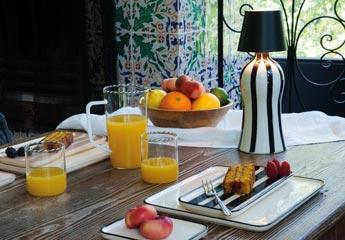

Arthur Krupp®, specialized in porcelain made in Germany and bone china, offers a professional range designed for the Ho.Re.Ca. sector and beyond. Highly resistant to impacts and breakage, the Eden collection plates explore a jungle-inspired style with refined, earthy-toned decorations that can be mixed and matched as desired.
by Giulia Arrigoni

In 2025, the number of B&Bs in Italy surpasses 32,000, with 65% run by women who are driving growth with a model of hospitality rooted in local areas and open to innovation
The bed & breakfast segment in Italy continues to represent a key component of national tourism, with over 32,000 registered establishments in 2025. While occupying a niche within the broader hospitality sector, B&Bs generate a significant economic impact on local economies and serve as a catalyst for regional development.
According to the B&B Italia 2025 Report, compiled by the Italian booking platform Bed-andBreakfast.it, one particularly notable finding is that around 65% of B&Bs are managed by women. This leadership is more than just a statistical figure—it profoundly influences the characteristics of the widespread hospitality model. Female-run establishments tend to emphasize service personalization, perceived quality, and added value through authentic experiences. This
translates into a competitive edge that compensates for the typical size limitations of microenterprises. From an economic perspective, female business models appear more inclined to diversify revenue streams (family income integration, use of real estate assets, full-time entrepreneurship) and to adopt cautious cost management, factors that contribute to greater resilience in a volatile market.

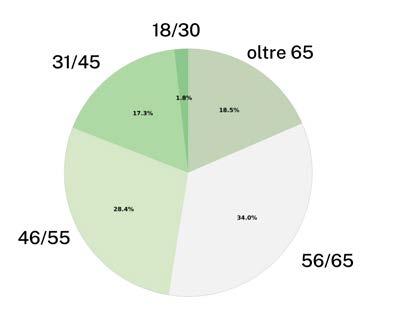
Source: Bed-and-Breakfast.it report 2025

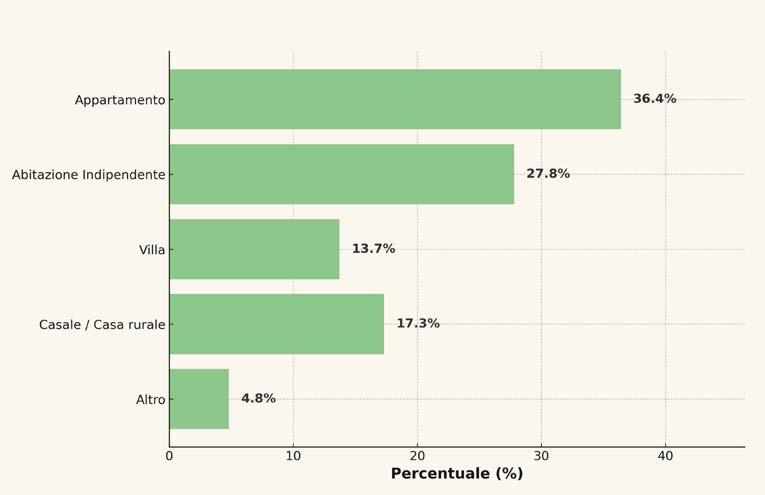
Source: Bed-and-Breakfast.it report 2025
The profile of non-hotel accommodation managers in Italy reveals a predominantly female sector (56%), with 40.6% male and 3.4% non-binary. The average age tends to be relatively high: most are over 45, with 28.4% aged 46–55, 34% between 56–65, and 18.5% over 65, while only 17.3% are between 31 and 45, and just 1.8% are aged 18 to 30. This data suggests that the activity is often undertaken later in life, either as a second career, following experience in other fields, or as a post-retirement opportunity.
Source: Bed-and-Breakfast.it report 2025
The sector recorded a 4.5% growth in new openings between 2024 and 2025, with a more dynamic trend in Southern Italy, where B&Bs continue to represent an opportunity for the local tourism economy. The distribution of establishments shows nearly half located in Northern Italy (44.1%), followed by Central Italy (26.9%), the South (16.1%), and the Islands (12.9%). The average nightly room rate generally falls within the €60–€100 range. These geographic figures highlight how B&Bs are not only a tourism phenomenon but also a tool for economic rebalancing in less industrialized areas, offering income and self-employ-


ment opportunities particularly in peripheral contexts.
The majority of bookings are made through online platforms, alongside a steady rise in the use of social media for direct promotion. This trend introduces an element of disintermediation which, while increasing international visibility (with nearly 60% of guests coming from abroad), also exposes operators to heavy dependence on the conditions imposed by global digital players.
The B&B sector must address several key challenges, including competitive pressure from
short-term rental platforms, which tends to compress profit margins; the need for regulatory harmonization, still fragmented across regions and municipalities; and the imperative to differentiate through quality and local identity.
In any case, the B&B Italia 2025 Report confirms that Italian B&Bs are not just an alternative form of accommodation, but a strategic economic driver. The predominance of women in the sector is not a marginal fact, but a structural feature that helps define its identity: a form of distributed tourism, deeply rooted in local communities, and geared toward creating not only economic value but also cultural and social impact.


by Francesca Guerini Rocco

Cinelli Piume e Piumini presents the new duvet from the Autumn/Winter 2025/2026 collection: Magnifico, the top-of-theline model designed for those seeking luxurious comfort. The cover is made of 93% Tencel®—a natural, breathable, and moisture-absorbing fibre—with 7% cashmere, while the filling is composed of 100% White Siberian Goose Down F.P.880, the rarest and most precious in the catalogue.
Fabrics as light as a caress, pure shades that brighten the room, and tailored details that turn elegance into a unique and exclusive touch. Textile collections dedicated to the world of hospitality combine comfort and style, offering a refined mood with a classic feel and contemporary accents — all fully customisable


With Contrée Sauvage, Lelièvre Paris brings a tactile and untamed touch to the contract world. Available in a rich palette of colours and textures, this high-performance collection (fire- and tread-resistant, extra wide) captures the essence of desert landscapes. Fabrics and carpets evoke the ruggedness of earth, the tones of tree bark, date palms, and play with contrasts: an enveloping printed canvas, a carpet and a tweed-effect bouclé with spicy accents, jacquards with elegant scrolls, stripes and graphic meshes.

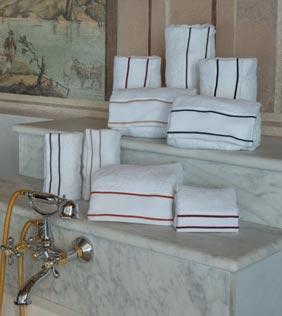
Italian textile tradition meets the hospitality industry with the new HOSPITALITY line by Cassera Casa in total white, offering solutions specifically designed for the world of accommodation. Traditional white is featured across bed linens in pure cotton sateen with 300 or 500 TC, 500 g/m² terry towels made from 100% double-twisted cotton yarn, and duvets and toppers filled with genuine goose down. Additionally, a bespoke one-to-one service is available for maximum customization.

Fullmoon and Minimoon are two of the many offerings from Élitis’ new L’Accessoire bed linen collection. This line stands out for its stylised graphics—geometric and botanical motifs—featured on pairs of pillowcases in soft cotton, available in various colours and patterns. Offered in both rectangular and square formats (50x70 cm or 65x65 cm).

The new thick wool throws with fringes by Élitis bring a bohemian flair to check patterns. Perfect for midseason use or to add a cosy touch to the lounge corner of a suite, Edith is available in four colours—snow, saffron, gentian, and linen—with bold contrasting lines. Size: 130x200 cm.
Lanerossi presents Wool Energy, the new patented, high-performance bedding system that blends natural materials, technology, and design to ensure maximum well-being. Extrafine Merino wool and memory foam enhanced with pure graphite powder offer thermal comfort, ergonomic support, and sensory quality, all within an elegant and sustainable design. The collection includes the Morfeo topper and pillow, the Thermocoperta blanket, and the g-raphite sheet set.




A collection born from sensory imagination: every fabric in the RÊVERIE line by C&C Milano is conceived as a tactile element, rich in textures and contrasts, opacities and transparencies. The range includes many proposals, such as tailored cashmere throws embellished with leather trims, delicate fringes, and saddle stitch details — all available in a wide variety of colors.
The new color chosen by Once Milano to warm up the autumn season is called Vintage Pink. Flirty yet warm and enveloping, it’s the perfect hue in its velvet version — used for tablecloth borders, individual placemats, and bedspreads.
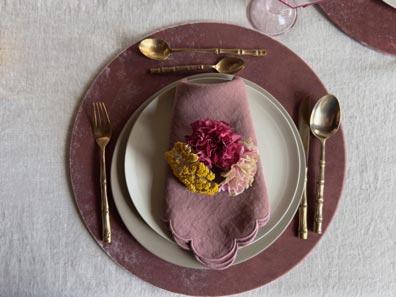
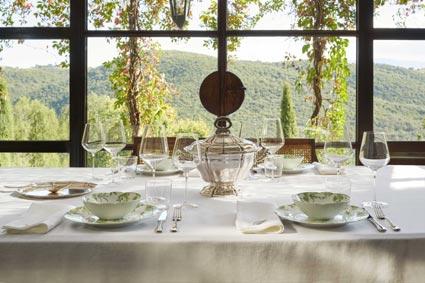
Quagliotti, a textile company specializing in luxury linens for 5-star hotels and Michelinstarred restaurants, presents its new table collections in doubletwisted spun linen — five times finer — enhanced by the traditional hemstitch finish. Perfect for ultra-chic tablecloths, runners, and placemats.
Somma 1867, a brand of the Gabel Group, presents the bespoke collection La Suite, designed for the world of hôtellerie or for those who wish to recreate the atmosphere of a deluxe suite at home. The shawl-collar bathrobe can be fully customized in both fabrics and colors.
Dedicated to boutique hotels, luxury establishments, and the most discerning clients seeking exclusive home linens, La Sartoria is the new brand by Caleffi that offers elegance, craftsmanship, and fully bespoke luxury. This high-end bed and bath linen service is curated down to the smallest detail—from fabric selection (Raso 600, Raso 300, Modal, Silk, Linen, and Jacquard) to prints and special finishes such as embroidery, piping, bourdon hems and quilting, as well as monogrammed initials or logos (for towels).

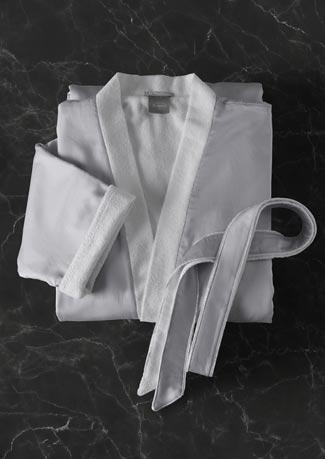

Made from 100% high-quality Ring-spun pure cotton, Hermet’s Luxury collection is designed specifically for the hospitality industry. Featuring double side stitching for added durability, the towel set includes an elegant embossed border and coordinated trim, with a weight of 500 g/m². The collection also includes a shawl-collar bathrobe weighing 400 g/m².
Sophisticated and fully customizable, the bespoke La Suite line by Somma 1867 also caters to little ones with a soft blanket made from fine wool yarn, perfectly paired with an embroidered bed set. Both are available with personalized fabric and color options.
A masterpiece of weaving based on an artist’s design, Iside & Osiride by Alessandro Bini combines fine silk with Jacquard lampas textures in sophisticated geometric patterns. This high-end Florentine craftsmanship is designed for prestigious contract projects in hospitality, retail, and yachting, as well as for private interiors.



Soft and luxurious, the Superior Soft pillow by Duxiana combines premium goose down with Egyptian cotton. Swedish artisanal craftsmanship ensures gentle support and optimal breathability, offering nights of restorative sleep in true Scandinavian excellence.

Thanks to his longstanding relationship with the HoReCa sector, Luca Carraresi, owner of the Dal Toscano store, explains the dynamics between this world and retail, and shares insights on the challenges that lie ahead
Fast food—often a by-product of the hectic pace of daily life that leaves us with little time and energy—has fortunately not managed to undermine the preference for healthy cooking made with natural ingredients. In Italy, in particular, this preference remains strong. And it’s not just the food itself that receives attention, but also the world that surrounds it: its mise en place, plating, and the many tools, dishes, glasses, and cutlery we use to enjoy it. In essence, food requires the right setting, some-
by Fabio Destefani
thing we consider carefully even when dining in restaurants, bars, or cafés. So much so that our judgment of the service often takes into account not only the taste of the food, but also these socalled “secondary” elements, which are in fact anything but secondary. The restaurant industry has picked up on this trend and increasingly turns to retail shops—rather than specialised distributors—to source elegant, refined, and carefully selected tableware that meets customer expectations for quality in all aspects of dining.
This trend is confirmed by the growing number of retailers in our sector who dedicate space in their shops specifically to restaurant supplies. We discussed this with Luca Carraresi, owner of Dal Toscano, a store located in Borgo Virgilio (MN). Here’s what he had to say...
When did you start targeting the HoReCa market (bars/restaurants, etc.), and what prompted you to move into this sector?
We began this journey in 2010, anticipating the decline of the wedding registry business. A careful analysis showed us that this was not just a marketing issue or a shift in consumer habits, but a deeper transformation in how people approach relationships and family life.
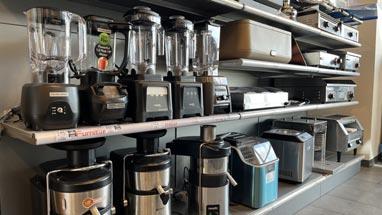
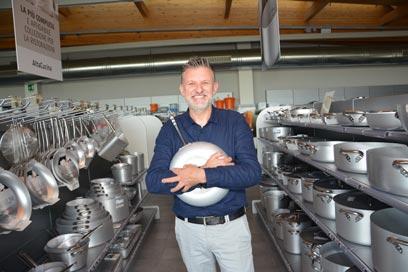
How has this experience gone so far?
The sector remains strategic to our business model, playing a key role in promoting cooking and high-quality cookware.
How did you initially promote your product offering?
Mainly within our local area, through a network of agents and promotional activities such as instore events and showcooking sessions.
What types of restaurants/establishments shop with you? What’s their level? Are they local or from farther afield?

Our customers mainly come from the city of Mantua and neighbouring provinces. Mantuan cuisine is a fascinating blend of flavours, reflecting the geographical crossroads between Lombardy, Emilia-Romagna, and Veneto. The venues are mostly traditional—osterias, trattorias, and agriturismi dominate the scene, with few gourmet or experimental restaurants.
Why do restaurateurs come to you instead of specialised distributors? What unique value do you offer?
Today, the line between HoReCa and retail is increasingly blurred. Customers move easily between these two worlds. It's not unusual to find professional tools in home kitchens and re-
tail products in restaurant table settings. We may not be the only ones in Italy doing this, but we were certainly among the first to create an HoReCa shop-in-shop inside a retail space.
Does the growing attention to quality and design in restaurant tableware help build relationships with the HoReCa sector?
Not always. In the current economic climate, customers are very price-conscious and choose what they feel is right for them.
Restaurant mise en place also follows trends. Based on your experience, what styles, materials, and designs are currently popular?
Mise en place has evolved into a visual language of its own. The classic table with a tablecloth is disappearing in favour of minimalist, bare tables. Rustic or country-chic styles with natural or reclaimed materials are still holding their market. Gourmet table settings are very trendy, often reflecting the environment and the menu itself. Think textured plates, satin or coloured (PVD) steel cutlery. Glasses are often patterned,

sometimes vintage or with botanical or ethnic design accents.
Do you have a dedicated space for restaurant supplies in your store? If so, how is it organised?
Yes, as mentioned, we have a dedicated exhibition area of about 400 m2, designed with a te-
chnical layout focused more on functionality than experience. To give a few examples, we have specialised sections for storage, cooking, baking, barware, and tableware.
What types of products does it include?
Essentially the same categories as the retail section, but with a purely professional orientation.

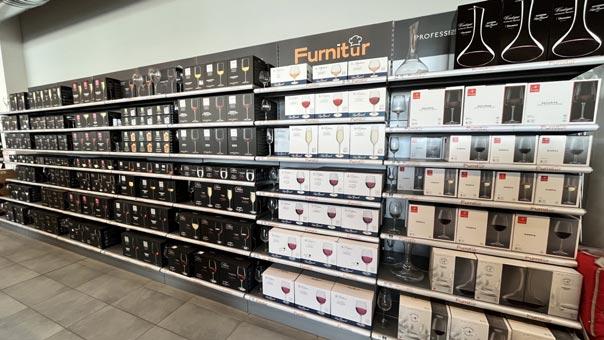
Which brands do you carry?
We work with the most important brands in the industry: Agnelli, Tognana, Bormioli, Sambonet, just to name a few.
Since entering the HoReCa market, have you seen any changes or developments? Would you say it’s a dynamic sector?
The sector remains strategic for the Italian economy. However, to stay competitive, businesses must invest in innovation, training, and digitalisation.
If there have been changes, what have they involved?
There are many challenges ahead. First, inflation and purchasing power: 90% of operators
identify declining purchasing power as the main obstacle. Then there’s the demographic winter: Italy’s population is shrinking, and over-65s spend much less in this sector than younger people. Also worth noting is the polarisation of consumption: the gap is widening between those seeking premium experiences and those looking to save.
Do you have plans to further develop your HoReCa offering? If so, in what direction?
In the past, restaurateurs would rely on local suppliers, often with long-standing relationships. Today, thanks to online transparency and competition, purchasing has become more rational and strategic, with price, quality, and after-sales service being key factors. Restaura-
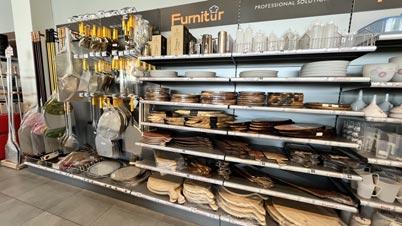
teurs are increasingly buying their equipment online, and this trend is accelerating in 2025. That’s why we launched Furnitur.it, our first B2B platform (with a simplified B2C-like approach) dedicated to the HoReCa world, offering real benefits for professionals managing restaurants, bars, and hotels: wide product selection, price comparison, fast delivery times, secure and flexible payment options, and online technical consulting.
Is there anything else you’d like to share with our readers about your relationship with the HoReCa sector?
In short, markets are constantly evolving. Crises aren’t just about marketing—they reflect profound changes in the way we live. Businesses that can seize opportunities and adapt with flexibility and creativity will gain a lasting competitive advantage, solidify their market presence, and build genuine relationships with their customers.
New opportunities for restaurateurs and the glassware sector. Sparkling wines and whites drive streamlined wine lists and bythe-glass service; upselling of dedicated glasses and tasting sets on the rise
At the end of 2025, Italian wine is enjoying a renewed wave of enthusiasm in the HoReCa channel. After years of fluctuations linked to rising costs and changing tourist flows, the latest signs are finally positive: consumers are looking for quality, experiences, and conviviality, putting the wine glass back at the heart of the social moment. Sparkling wines are leading the resurgence: according to the latest Valoritalia Report, Italian sparkling wines are growing by around 5% year-on-year, driving the market with their festive and versatile appeal. Alongside them, fresh, crisp white wines are gaining ground—ideal for aperitifs and light lunches—while red wines, though slightly declining, are finding new vitality in wine lists that highlight native grape varieties and local storytelling. Non-alcoholic wine deserves a chapter of its own, having surpassed €55 million in Italy and set to grow by over 60% by year-end. This trend isn’t about giving something up, but about expanding drinking occasions: those who choose to limit alcohol can still raise a glass, and venues that include one or two alcohol-free labels


on their list show awareness of new consumer sensibilities. For out-of-home professionals, this is the perfect time to rethink their wine offering with a positive mindset. Extensive wine lists aren’t necessary—ten well-selected labels are enough, with a couple of seasonal surprises, a good range of Italian bubbles, and some by-theglass options that encourage exploration. The “less is more” philosophy aligns with the growing appetite for meaningful experiences: customers want quality and storytelling, not quantity. This opens up opportunities for native grape varieties, tasting events with winemakers, and communication that highlights sustainability and the vineyard connection. This repositioning is also
boosting the glassware sector, which is now a real driver of revenue and perceived quality. Upselling comes through a streamlined but wellthought-out set: tulip glasses for sparkling wines, fine universal stemware for young reds and whites, ballon glasses for full-bodied reds, and tall glasses for rosés and macerated (orange) wines. The mood at the end of 2025 is therefore encouraging: demand is strong, more discerning and selective, ready to reward venues capable of delivering an experience beyond the glass. For those working in HoReCa, it’s time to raise a toast: with its blend of tradition and innovation, Italian wine is reclaiming the spotlight and promises a 2026 full of toasts and new opportunities.

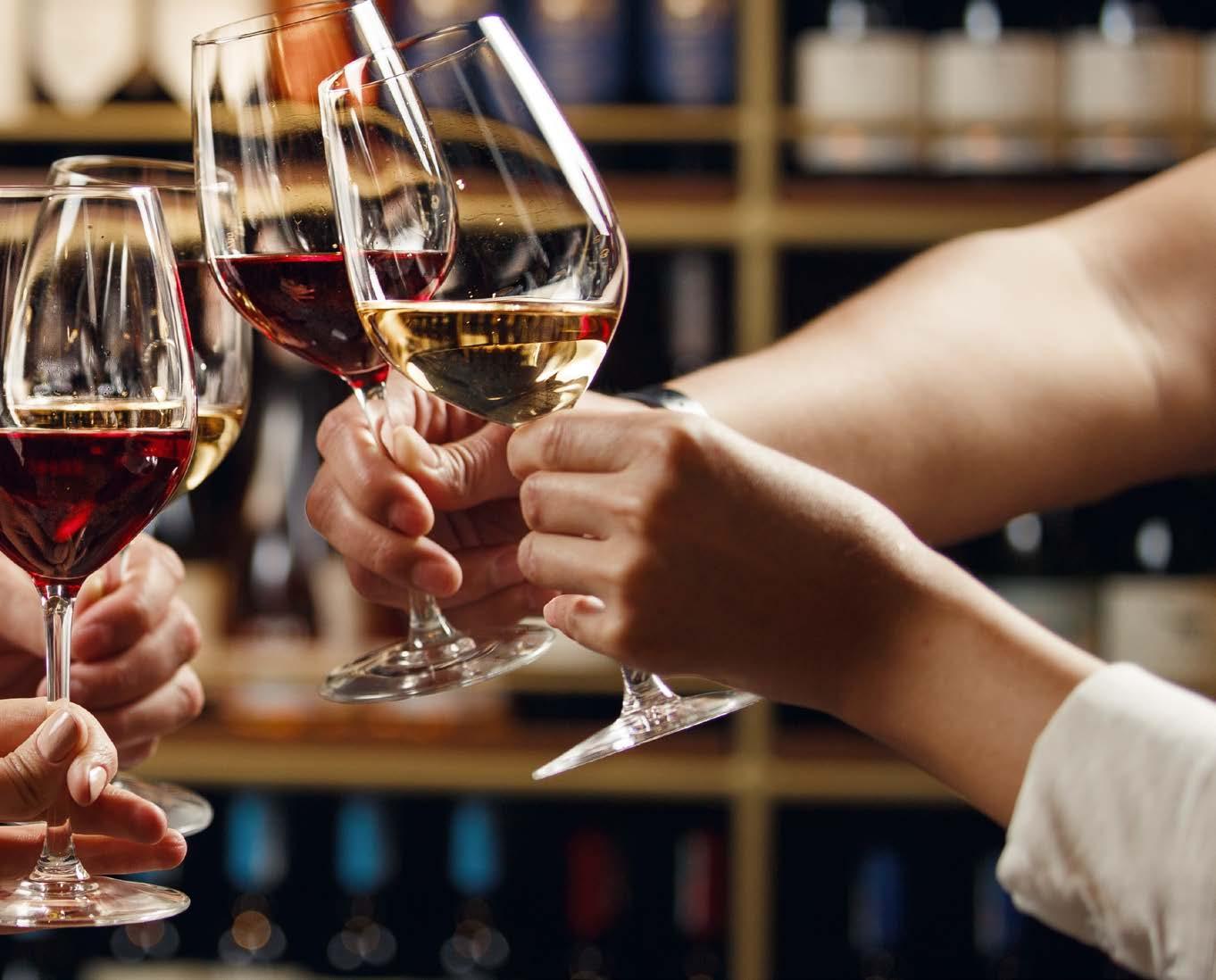
One of the most intriguing developments is the buzz around alcohol-free (or dealcoholized) wine. In 2024, the market reached €55 million, and growth of up to +60% is projected for 2025. This trend isn’t just a response to growing health-consciousness—it’s creating new drinking occasions, perfect for evenings and social moments where people want to toast without the alcohol. The recent decree allowing the production of wines with ≤ 0.5% ABV (except for DOP/IGP wines) opens the door to innovations that could inspire a dedicated “low-alcohol” section on restaurant wine lists.

The glacette from the Silver Nights collection by Pozzi Milano is perfect for serving champagne: double-walled stainless steel with an elegant pleated finish, handcrafted with artisanal care. Since 1876, Pozzi Milano has been a symbol of timeless elegance, and this champagne bucket embodies the heritage of a brand that began in men’s fashion and evolved into high-end tableware.
by Francesca Guerini Rocco

The undisputed star of the art de la table and 2026’s convivial spirit is mixology, which transforms the act of drinking into a refined and multisensory ritual. From luxurious silver and bamboo sets to boldly coloured borosilicate glasses, each brand interprets the art of cocktails with iconic designs and exquisite craftsmanship— versatile enough for a chic lounge bar or the comfort of a home setting. Innovative shapes, vibrant hues and unexpected materials define a constantly evolving trend, dressing the aperitif hour in contemporary flair, where elegance meets creativity

Sambonet’s new 2026 catalogue fully embraces the art of mixology, offering a wide range of dedicated glassware in borosilicate glass that plays with bold and unconventional shapes. From organic silhouettes inspired by nature to irregular volumes that challenge traditional symmetry, each piece is designed to turn every drink into a complete sensory experience. Perfect for cutting-edge cocktail bars as well as stylish home settings, they are lightweight yet resistant to thermal shock.

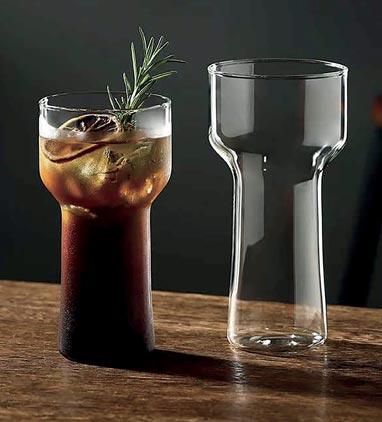
IVV, a specialist in glass tableware, presents its new Cocktail Drinkong line: each blown glass stem is specifically designed for a different cocktail, from Gin and Tonic to Martini, from grappa to rum, all the way to beer. Ensuring a perfect tasting experience every time.


For bars, restaurants, and hotels looking to turn aperitifs and afterdinner drinks into moments of pure allure, Vidivi presents Mixology & Spirits: a glassware collection where vintage design meets contemporary innovation. Shapes designed specifically for cocktails, spirits, and pure distillates enhance color nuances and reflections, while refined decorations, light effects, and textured surfaces create a multisensory experience that engages both sight and touch. Made of 100% recyclable crystal and produced using renewable energy sources and exclusively electric furnaces.

It could only be called Tattoo, the RCR collection inspired by the aesthetics of Body Art. The wide range of pieces is crafted in Luxion®—an exclusive, superior sound glass that is highly resistant, dishwasher-safe, and 100% recyclable. All models are developed in collaboration with top food and beverage experts, including the Mule and Clessidra glasses, which received the Smart Label, Host Innovation Award. Each glass can be customized with the client’s logo engraved in bas-relief.
Diamond-cut detailing defines the cocktail jug, tumblers, flutes and stemware from Pasabahce’s Timeless collection, delivering a luxurious, sparkling effect ideal for sophisticated mise en place. The glassware is available in a wide variety of shapes and sizes—perfect for whisky, shots, gin, martinis, champagne and cocktails, along with essential models for wine and water.
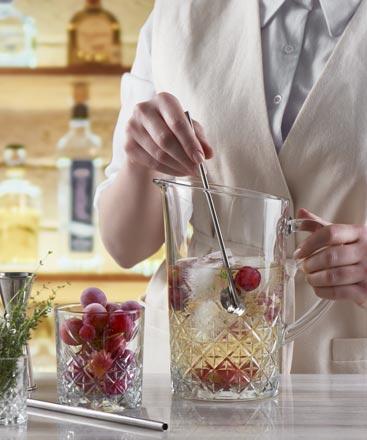

Cocktail sets and refined coasters: Buccellati celebrates the aperitif ritual with the Tahiti set in silver and bamboo, and the iconic Rouche decoration, originally created in the 1950s, adorning the new coasters. The famous wavy motif, inspired by the movement of the sea and the shape of certain seashells, is crafted using the ancient technique of chasing.

Simple, chic, versatile and timeless: SchönhuberFranchi’s creations interpret the art of mixology with understated elegance. Among the latest additions are Q2, a tumbler that balances classic and contemporary moods while retaining the features of a sommelier glass, and Lines, with its graceful shape and distinctive, light and refined texture.



A gin and tonic with Blueside and Gino, the borosilicate glass designed specifically for this drink. Characterised by an unusual slanted rim that makes it truly one of a kind, Gino is highly iconic and also perfect for serving Spritz and sparkling cocktails.
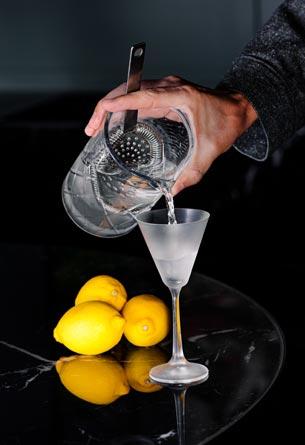

Designed by Sabrina Lazzareschi for KnIndustrie, the Cast Away glass is crafted in glazed earthenware by the master artisans of Caltagirone. Ideal for keeping any cocktail (or even a classic beer) at the perfect temperature, it features a rough terracotta-coloured exterior and a glossy anthracite grey glazed interior.
Creating a cutting-edge cocktail is a true art for Crystalex Bohemia. That’s why the brand has developed a dedicated bar glassware set in collaboration with expert bartenders. Among the highlights are the Praline Martini Espresso glass, originally designed for Martinis but also ideal for cocktails, bitters and liqueurs, and the Waterfall Cocktail glass, a 340 ml coupe that complements the wine glass collection.
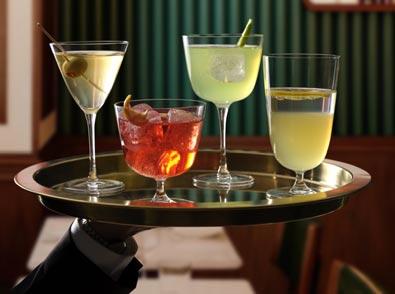
NUDE Glass presents BAR/GIANI, the new cocktail glass collection designed in collaboration with award-winning mixologist Giorgio Bargiani. The collection features four cocktail glasses and an elegant mixing glass, all reinterpreting classic shapes by adding a stem — enhancing the mixology experience both in bars and at home.
For 2026, Mario Luca Giusti presents the new Peter collection: the low, wide, and sturdy tumblers are enhanced by five bold colours (turquoise, royal blue, ruby, amber, green) with a ribbed surface that contrasts with the clear base. A fully transparent version is also available. Perfect for serving bold on-the-rocks drinks.

Entirely handmade in blown glass, resistant, stackable and dishwasher safe, the new Handy tumblers designed by Federico de Majo and Marco Vanin for Zafferano stand out for the slight contouring of the profile, which makes them more ergonomic as well as visually striking. Available in 9 vibrant colours, they are part of a collection that also includes a borosilicate glass bottle in five colours with two interchangeable satin-finish stoppers in gold and silver, a highball glass, a small stackable bowl, and a transparent carafe.

6 – 10. 2. 2026
FRANKFURT / MAIN
6 – 9. 2. 2026
FRANKFURT / MAIN
6 – 10. 2. 2026
FRANKFURT / MAIN
Non mancare all’appuntamento decisivo per il tuo successo! A Francoforte, tre fiere leader presenteranno contemporaneamente il mercato globale dei beni di consumo in tutta la sua completezza. Scopri le novità e le tendenze, i temi più attuali e le infinite opportunità per il settore delle decorazioni stagionali, del fai-da-te e i prodotti pensati per ogni stile di vita.
It’s time for consumergoods.messefrankfurt.com visitatori@italy.messefrankfurt.com Tel. +39 02 880 77 81
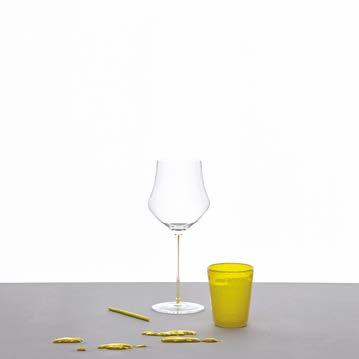
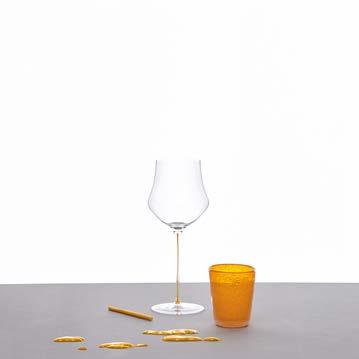

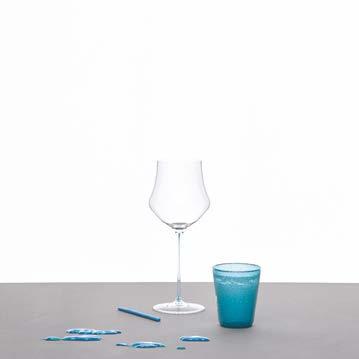
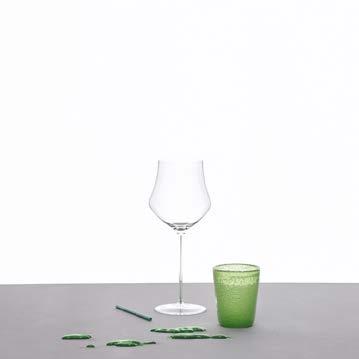
Ti aspettiamo a Milano-fiera-HOST vieni a scoprire le nostre collezioni al Padiglione 9-Stand-Q33
